





This guide includes two middle school level lessons, inspired by topics from the giant screen format documentary Ocean Odyssey, and created by the Education Department of the Khaled bin Sultan Living Oceans Foundation (www.lof. org), a US-based 501(c)(3) dedicated to protecting and restoring ocean health through research, outreach and education. While watching Ocean Odyssey is not required to carry out the lessons, the film serves to greatly enhance the learning experience.
Host-narrated by oceanographer Sylvia Earle, Ocean Odyssey is an immersive, giant screen format film following a mother and calf humpback whale on their migration from the tropics to Antarctica. On this journey, we learn how ocean currents nurture life in diverse environments, including the tiny phytoplankton in ocean upwellings, clownfish and anemone in the Great Barrier Reef, seabirds on a subtropical island and endangered nurse sharks in an underwater cave. Connecting it all is the understanding that the ocean and life on land are intricately interconnected.

NOTE: Lessons in the middle school section are suitable to grades 6, 7, or 8, depending on when students study life science.
Author Amy Heemsoth, Khaled bin Sultan Living Oceans Foundation
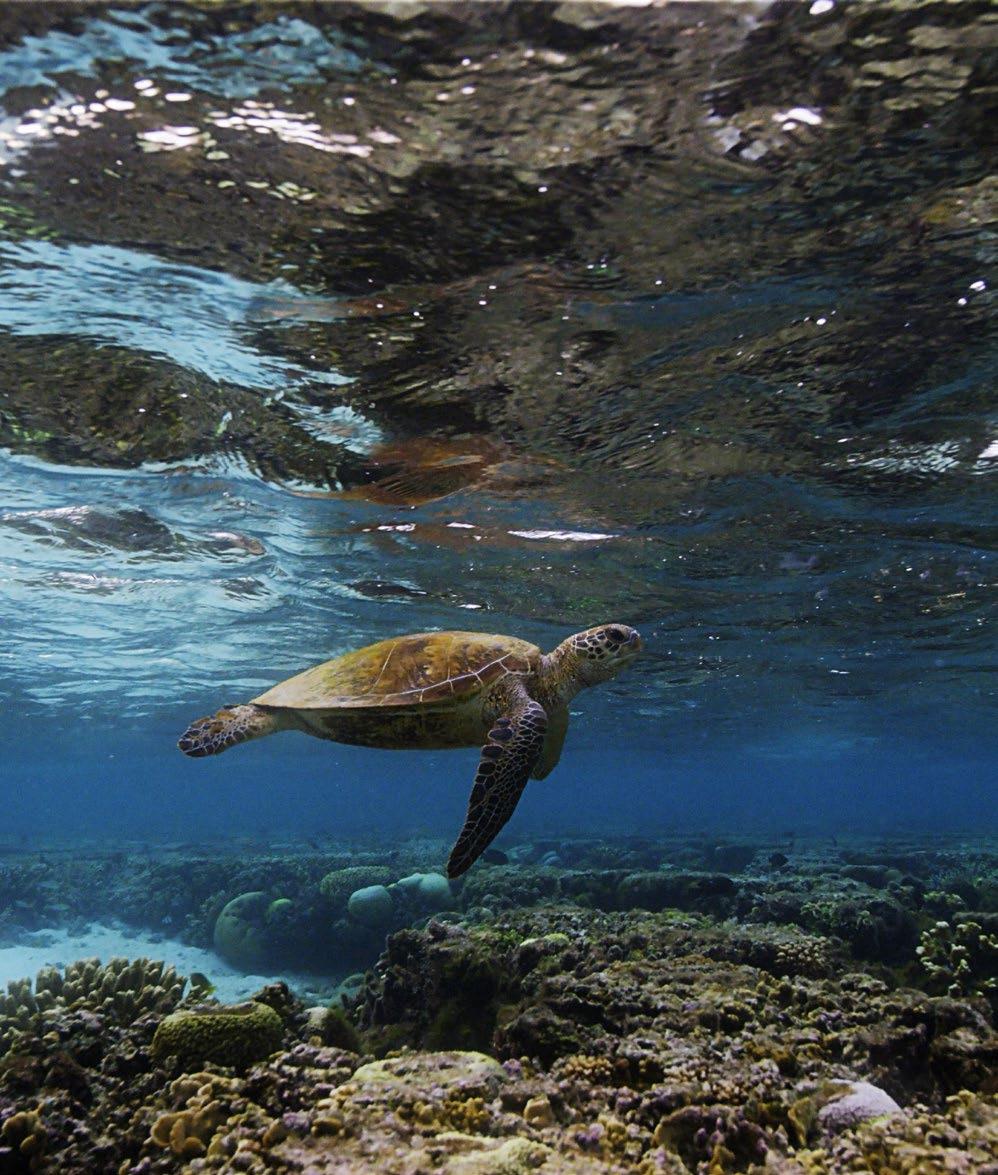
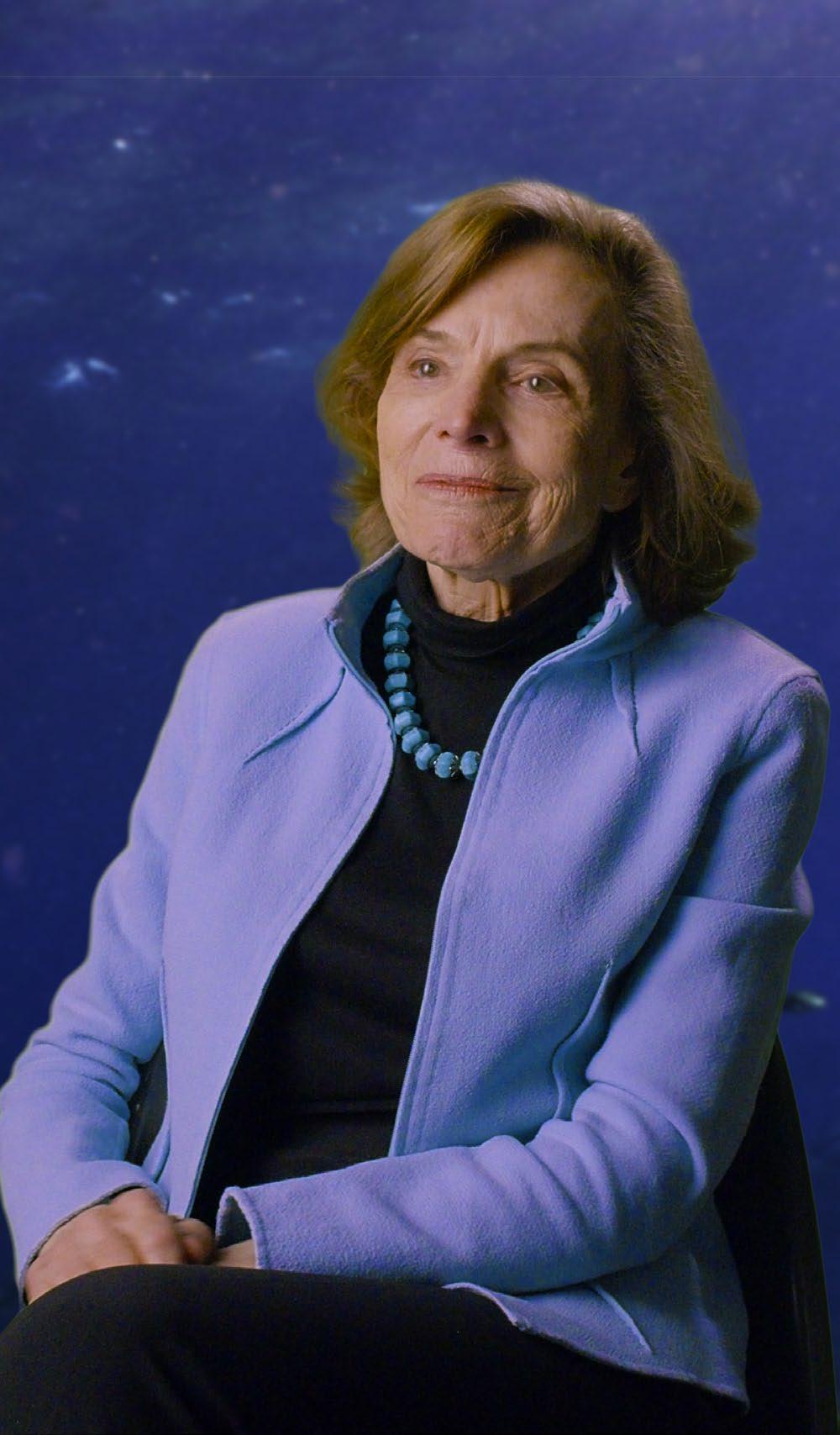
• Define the terms matter and energy.
• Define and differentiate between the terms autotroph (producer), heterotroph (consumer), and decomposer.
• Recognize the two categories of autotrophs: photoautotrophs and chemoautotrophs.
• Differentiate between the three types of consumers: herbivore, omnivore, and carnivore.
• Differentiate between decomposer and detritivore.
• Define food chain.
• Illustrate how matter cycles and energy flows through an ecosystem.
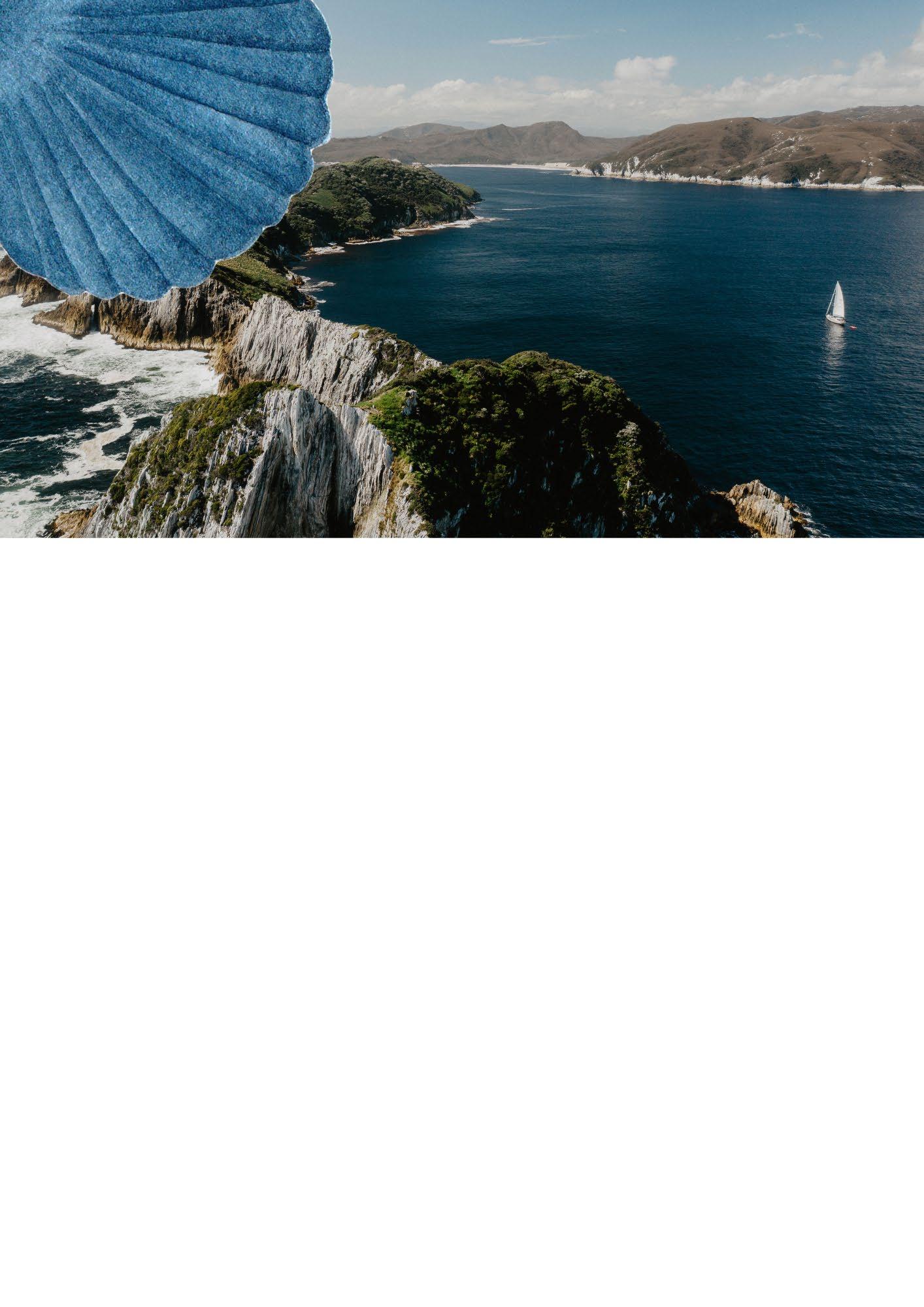
• Interpret, construct, and draw a food chain.
• Classify organisms’ type(s) of feeding strategies based on their diet.
• Define food web and interpret a food web diagram.
• Develop a model of a coral reef food web.
• Understand that food webs can become unstable when there are disruptions to biological or physical components of an ecosystem.
• Practice creating a food web that has encountered a disruption to identify how organisms’ populations are affected.
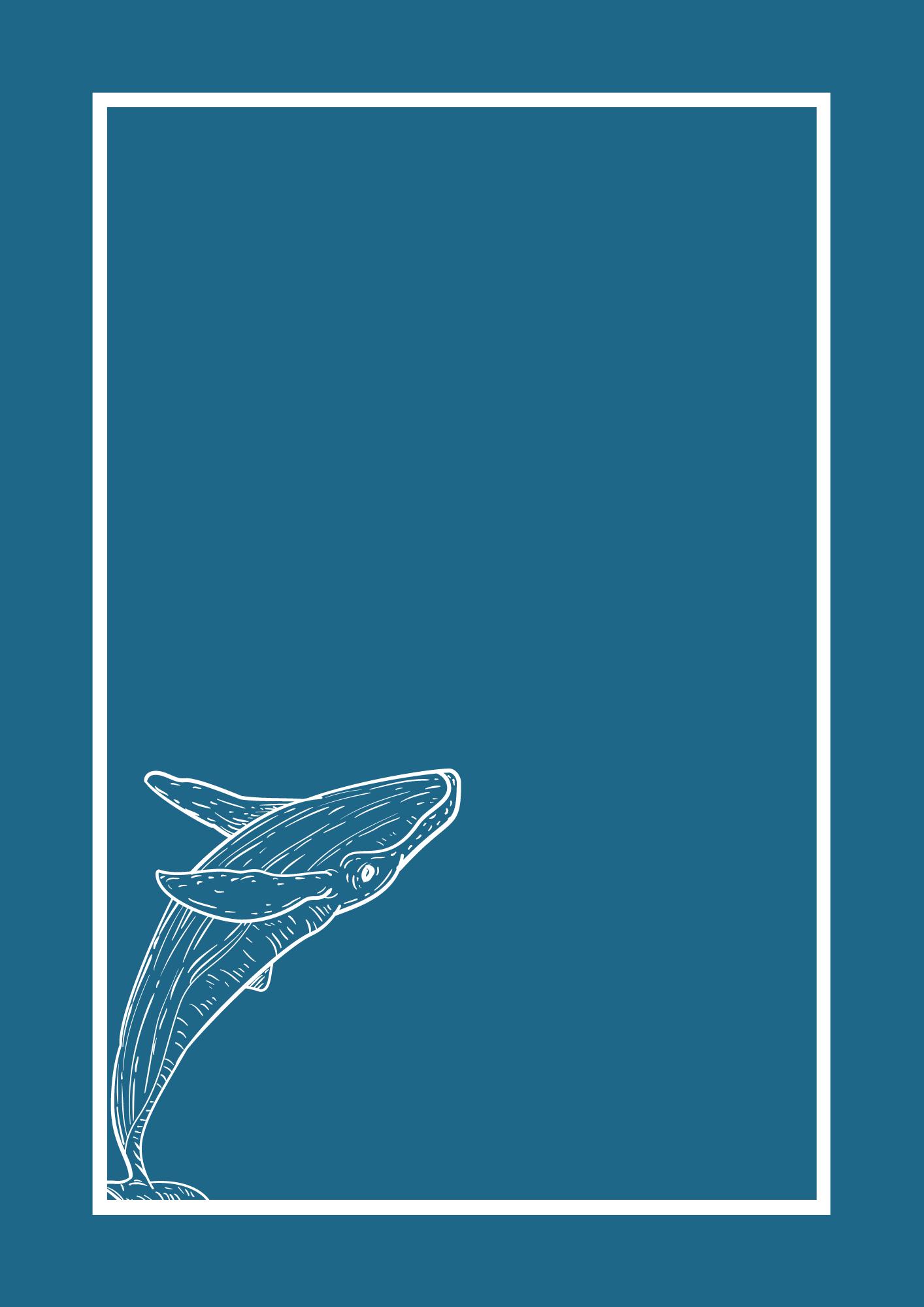
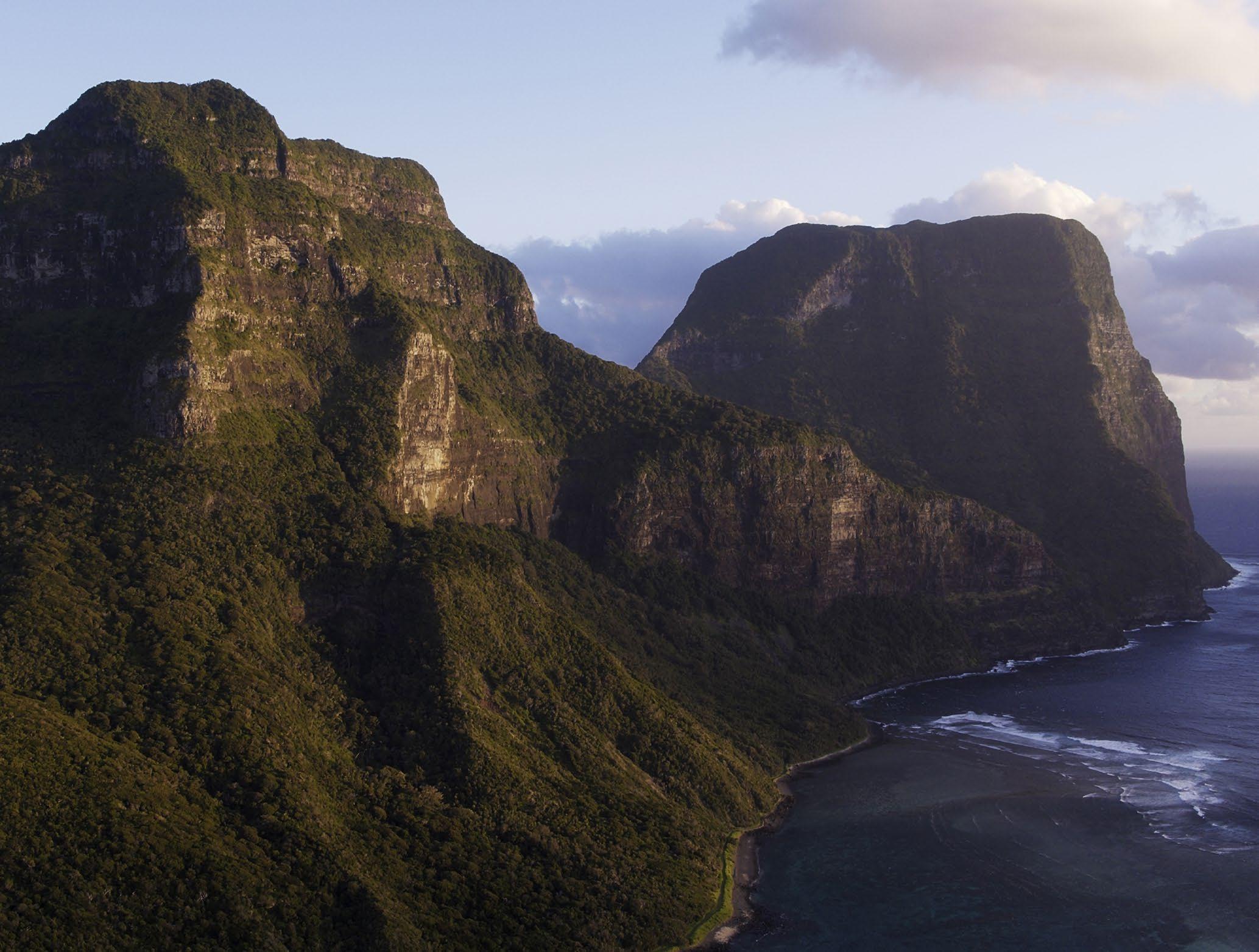
•
Teach students about trophic levels (see Unit 16: Food Webs - Background Information). After completing the Procedure Section 2: Food Chains, ask students to identify the trophic levels (primary producer, primary consumer, secondary consumer, and/or tertiary consumer) in each of the four food chains that they modeled. They can write the trophic level above each feeding strategy in the food chains.
• Students can research an ecosystem disturbance that was portrayed in the film or choose a different disturbance. They should specify how these disturbances can create instability in the food web (population declines or increases, people have less food, ecosystem collapse, etc.). Their answers should include information about how other populations could be affected by the disturbance.
Next Generation Science Standards:
• MS-LS2-3 Develop a model to describe the cycling of matter and flow of energy among living and nonliving parts of an ecosystem.
• MS-LS2-4 Construct an argument supported by empirical evidence that changes to physical or biological components of an ecosystem affect populations.
Ocean Literacy Principles: 5.A.1, 5.A.3, 5.A.4, 5.A.6, 5.A.16, 5.A.21; 6.A.5-6.A.7, 6.D.1-6.D.21
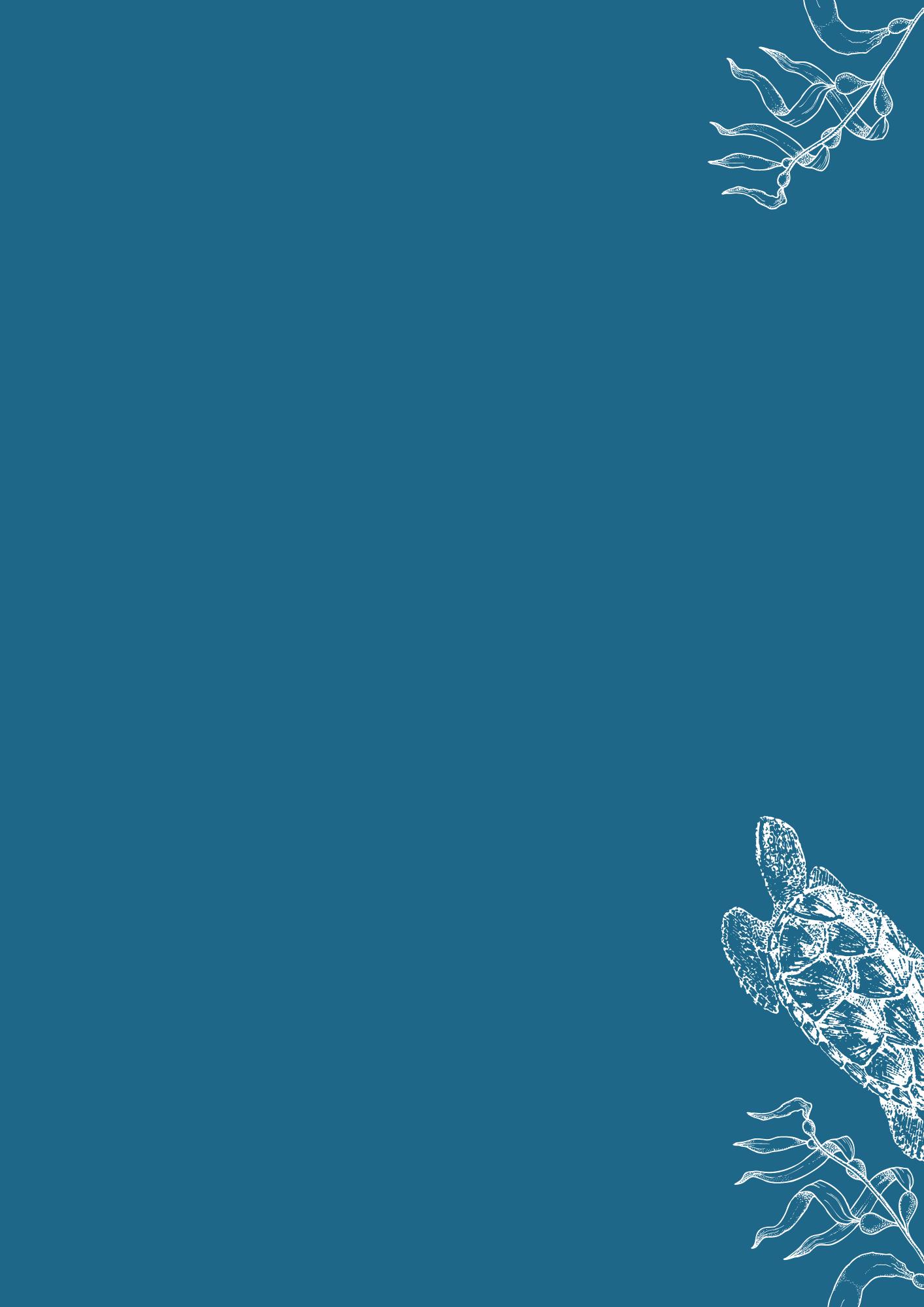
Common Core State Standards:
• SL.6.1-8.1
• SL.6.5-8.5

• Clownfish by Alex Brown (CC BY 2.0 [https:// creativecommons.org/licenses/by/2.0/]) 23 July 2011 via Flickr. https://flic.kr/p/a6fGi2.
• Humpback Whale by National Marine Sanctuaries [CC BY 2.0 (https://creativecommons.org/licenses/by/2.0/)] 22 February 2012 via Wikimedia Commons. https://commons.wikimedia. org/wiki/File:HIHWNMS_Humpback_Whale_Underwater_ (49530678743).jpg.
• Mullet: Anne Hoggett/Lizard Island Research Station (CC BY 3.0 [https://creativecommons.org/licenses/by/3.0]) 29 October 2018 via Wikimedia Commons. https://commons. wikimedia.org/wiki/File:DiamondscaleAnneHoggett.jpg.
• Wedge-tail Looking by Duncan [CC BY-SA 2.0 (https:// creativecommons.org/licenses/by-sa/2.0/)] 4 July 2006 via Flickr. https://flic.kr/p/4uxbzT.
• Plankton by Gustaav Hallegraeff, Emeritus Professor, University of Tasmania. www.imas.utas.edu.au.
• Zooplankton by Dieter Ebert, Basel, Switzerland (CC BY-SA 4.0 [https://creativecommons.org/licenses/by-sa/4.0/)] 19 May 2009 via Wikimedia Commons. https://commons.wikimedia. org/wiki/File:Daphnia_magna_with_Hamiltosporidium_ magnivora.JPG.
Ocean Odyssey continuously shows us that everything on Earth, whether it is living or nonliving, is connected. The film takes us on a journey through a coral reef to reveal the complex feeding relationships in this ecosystem. Nutrients are transported to the ocean’s surface by currents, which drives the growth of phytoplankton that make up the basis of the coral reef food web.

These microscopic photosynthetic organisms are then consumed by zooplankton such as copepods. Copepods are eaten by juvenile fish, which are then consumed by larger fish such as coral grouper. As seen in the film, these food chains can be disrupted by humans when overfishing, plastic pollution, and climate change occur. These disruptions create instability in ocean ecosystems.
In this lesson, students will further explore the feeding relationships between organisms in a coral reef ecosystem, including many organisms seen in the film. They will model how matter is cycled and energy flows through a coral reef ecosystem. Students will also learn about disruptions that threaten the stability of the coral reef food web.
For more about the giant screen format documentary Ocean Odyssey and museum theater listings, please visit: https:// www.oceanodysseyfilm.com/.
Step 1. Prior to implementing the activity, print and then laminate Appendices A-C.
Step 2. For Part E: Disruptions to the Food Web activity, each student will need to fasten one food web organism to their clothing. This can be secured using alligator clips or lanyards. If these supplies are not available, print and laminate an extra set of cards. Punch holes in the top corners of each card. Cut a piece of yarn that is long enough to fit over the students’ heads. Tie each end of the yarn to the holes in the corners of the card.
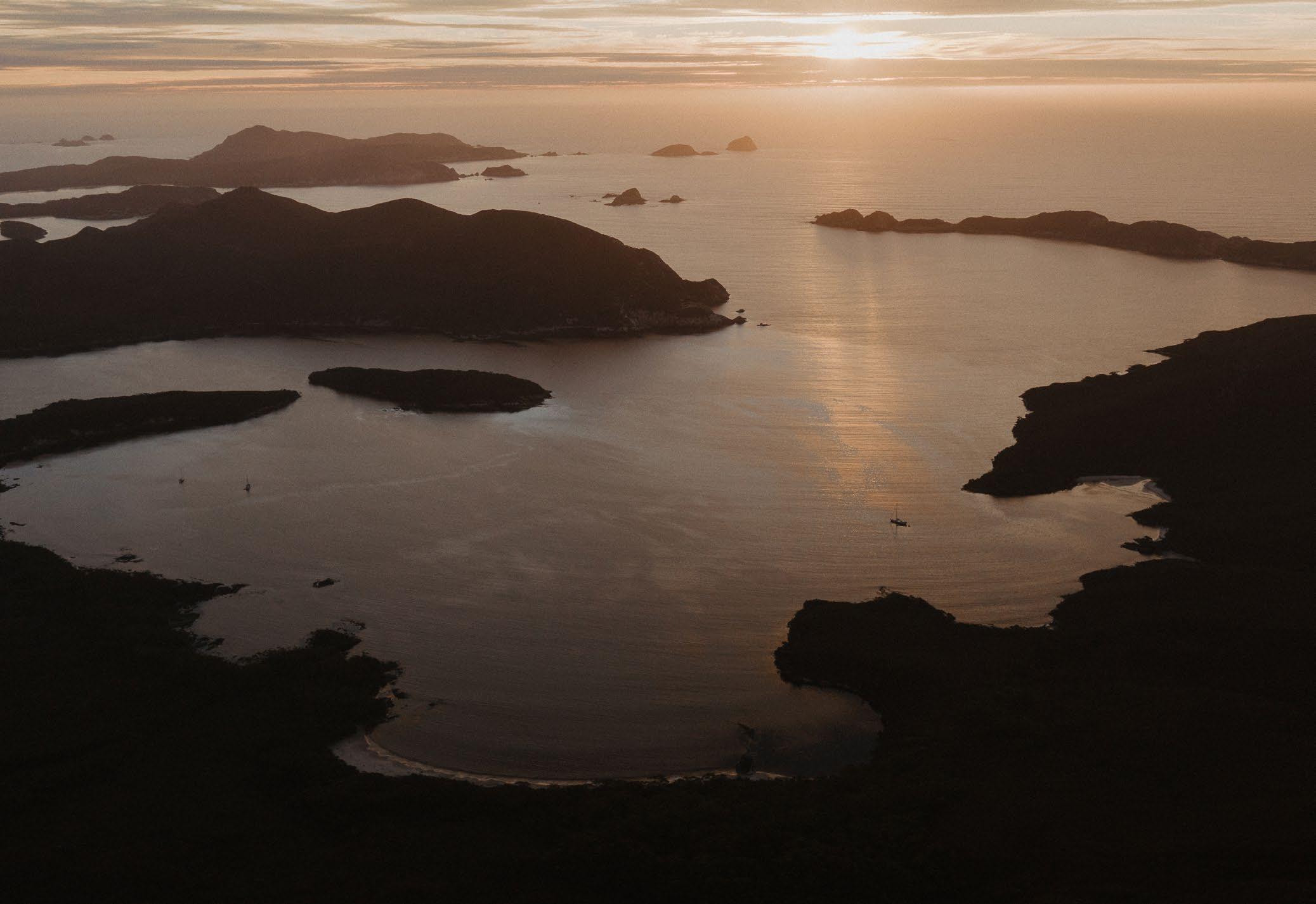
Step 1. Watch Coral Reefs: Unraveling the Web YouTube video (https://youtu. be/kuEe4376il8) and answer questions on Watch It! Unraveling the Web student worksheet (https://www. livingoceansfoundation.org/wp-content/ uploads/2015/04/U16-Food-Web-WatchIt-V2.pdf ).
Step 2. Teach relevant information from Food Web Dynamics - Background Information (https://www. livingoceansfoundation.org/education/ portal/course/food-web/).
Step 1. Divide students into groups. The activity will work best in groups of 3-4 students; however, it can also be conducted by individuals.
Step 2. Throughout the activity, there are suggested prompts in blue boxes to engage students in learning. After each question (Q) are suggested answers (A). Begin the activity by asking:
Q ‘‘Do you recall from the film any of the organisms that live in or near a coral reef?’’
A A variety of answers are acceptable including phytoplankton, copepods (zooplankton), sea turtles, jellyfish, octopus, clownfish, anemones, humpback whales, and wedgetail shearwater birds.
Q ‘‘Do you recall any of the feeding relationships between any of the organisms in the film?’’
A Answers may include humpback whales eat krill (zooplankton) and sea urchins eat kelp.
Q
‘‘What is a food chain?’’
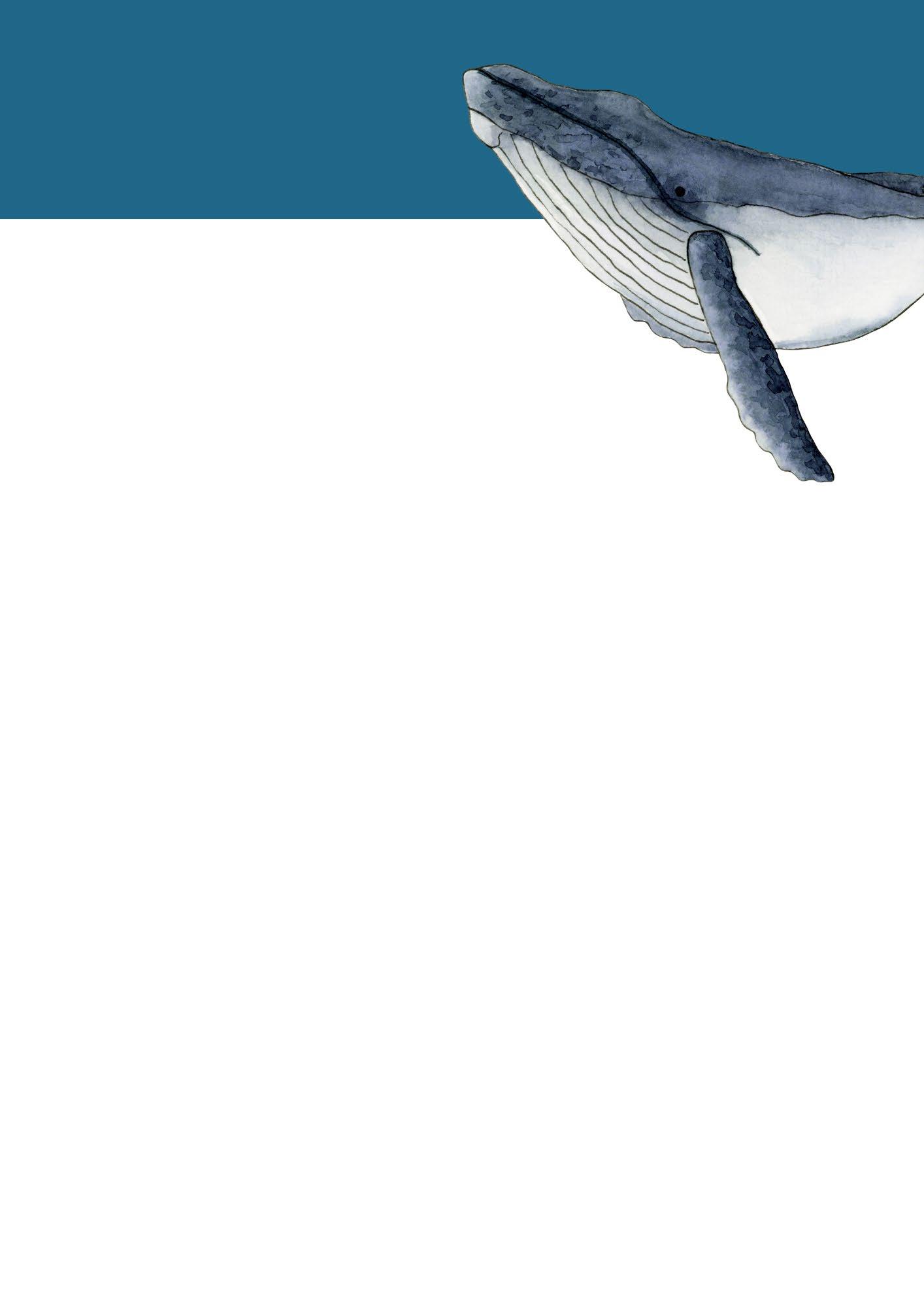
A A food chain is a group of organisms that depicts the feeding connections in an ecological community. It is a linear sequence of what-eatswhat in an ecosystem.
Q
‘‘What do the arrows represent in a food chain?’’
A The arrows represent a transfer of matter and energy from one organism to another. The direction of the arrows does not represent the organism being eaten, but the organism doing the eating.
Step 3. Distribute Lesson 1: Stringing it Together student worksheet to each student and provide Appendix A: Coral Reef Organism Cards and matter and energy arrows from Appendix B: Arrows to each group.
Step 4. Instruct students that they will construct a food chain using the cards and arrows provided. Explain that the cards represent some of the organisms that live in a coral reef ecosystem in Australia. The backs of the cards provide information about the diet and approximate size of each organism. Using this information, students should be able to construct multiple food chains. The food chain should contain at least two organisms; however, they should try to link as many organisms together as possible.
Step 5. Next, review the different types of feeding strategies that organisms use. Provide each group with a set of the feeding strategy cards from Appendix C. Each group should review the diet listed on each organism card in their food chain. They should choose the corresponding feeding strategy card(s) and place it above each organism in their food chain. NOTE: Some organisms could have multiple feeding strategies. For example, mullet are herbivores and decomposers.
Step 6. Each student should draw the food chain on their student worksheet. Instruct them to write the feeding strategy above each organism in their food chain.
Step 7. Each group should create three additional food chains (repeat steps 4-6).
Step 8. Once the students have modeled four food chains, ask each group to present one of theirs. If possible, ask students to draw them on a white board. After each group has presented, ask the class:

Q “Do you notice anything about the food chains?” If students are not responding, prompt them further, “Are there any patterns that you notice?”
A Food chains usually begin with a producer (macroalgae or phytoplankton).

does
chain begin with
A Decomposers are essential to cycling matter through an ecosystem. Without them, waste and dead organisms would accumulate. The waste and dead organisms wouldn’t get broken down and cycled through the ecosystem; therefore, there wouldn’t be enough matter to support it.
Step 10. Provide groups with heat, waste, and nutrient arrows from Appendix B and the sun and decomposer cards from Appendix C. Students should reconstruct one of their food chains that they made earlier and incorporate these cards into their model.
Step 11. Choose one example to illustrate on the board and discuss.
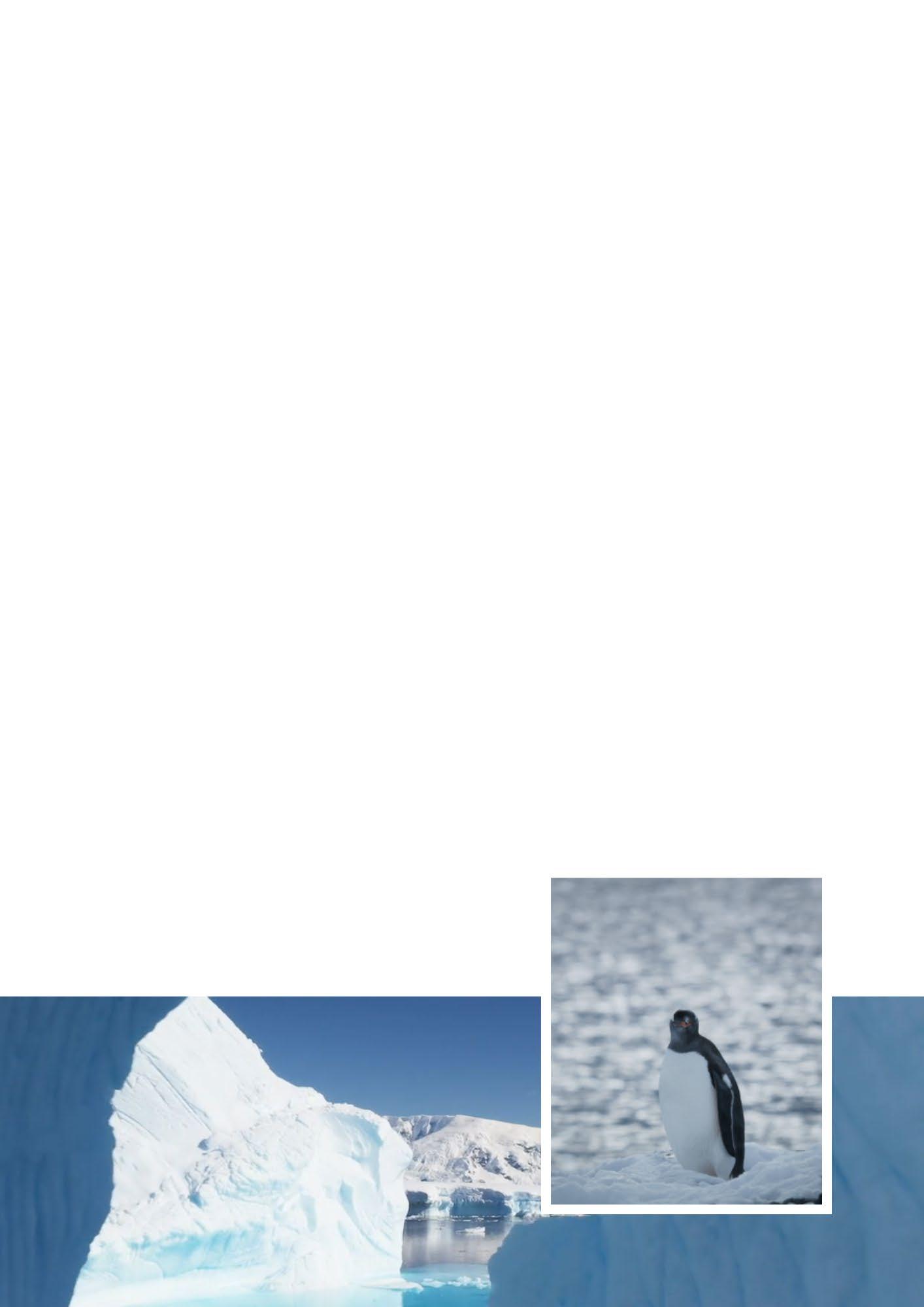
Step 12. Each student should draw this food chain on their student worksheet.
A The First Law of Thermodynamics states that “energy cannot be created nor destroyed; it can be converted into different forms.” Approximately 10% of energy is passed on to the next organism while the other 90% is lost as heat to the ecosystem. Heat is not returned to the sun.
Q “Do you think that decomposers play an important role in an ecosystem?”
Q “Is all energy passed from organism to organism when feeding?”
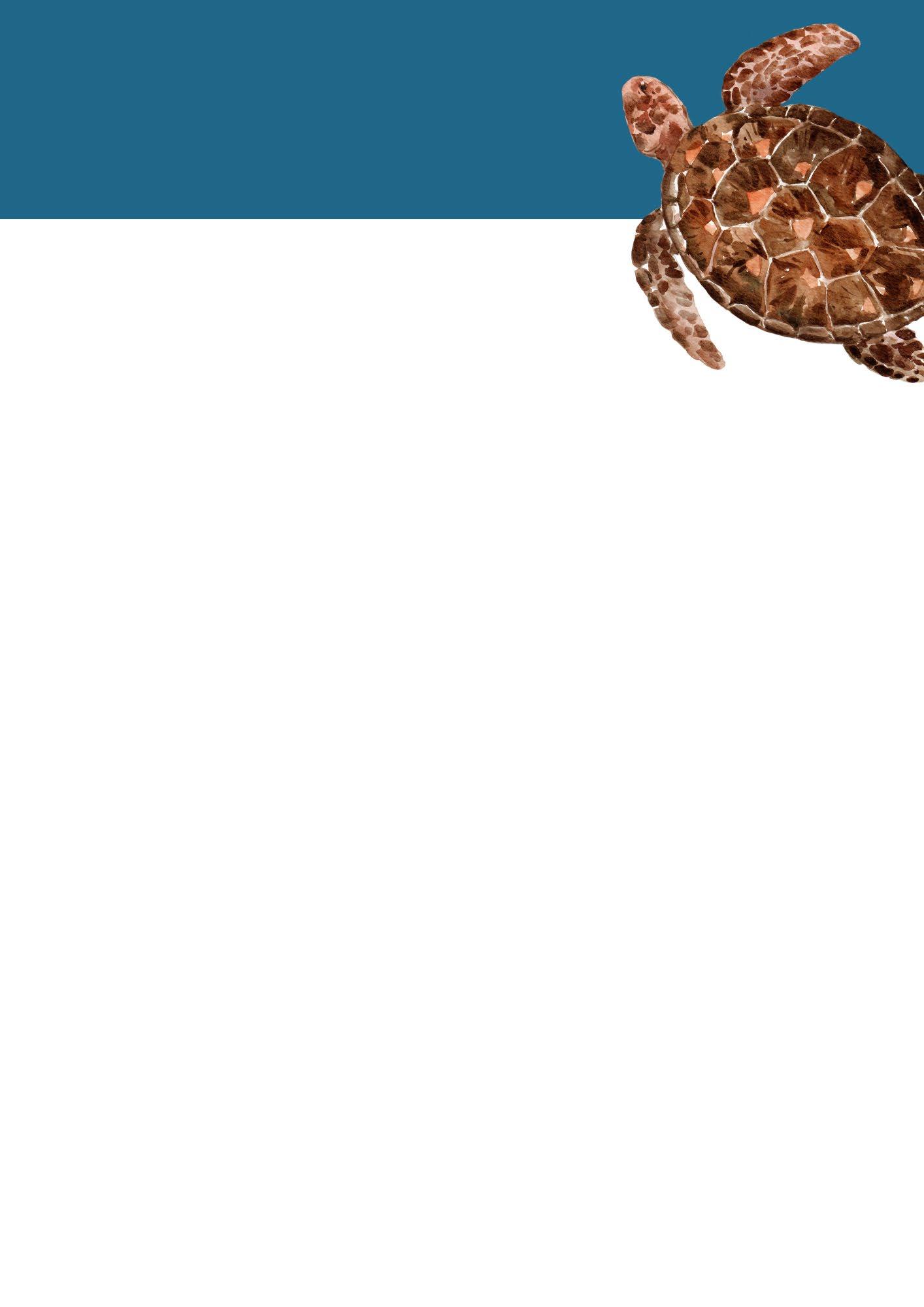
Step 1. Review the definition of a food web. Students should understand that a food web is a series of interconnected food chains in an ecological community. As with food chains, arrows are used to show the transfer of matter and energy from one organism to another.
Step 2. Explain that students will now create a model of a food web using all of the organism cards.
Step 3. To conduct the activity, supply each group with a piece of poster paper and the organism cards.
Step 4. Students will place the organism cards on the poster paper. Inform students that they will need to draw arrows from one organism to another. Again, reinforce that the arrows represent the flow of matter and energy, and the organism that consumes the other (not the organism being eaten). This is a complex food web. It would be too confusing to include matter and energy arrows in their models; therefore, explain to students that they only need to use one arrow that represents matter and energy. Suggest that students first draw the arrows using a pencil. Later, students can trace the arrows with markers, colored pencils, or crayons (optional).
A Food webs are extremely complex. There are many other species that live on a coral reef that are not included here. Although the food web includes organisms that are not listed as species (e.g., phytoplankton, zooplankton, and hard coral), food webs illustrate every species in an ecosystem. For example, there are thousands of phytoplankton species, and it would be extremely difficult to model this. The food web does not include decomposers such as bacteria or the source of the energy – the sun. Humans are also not included. NOTE: If they do not mention humans missing from the food web, make sure to introduce this idea in Part E: Disruptions to the Food Web.
Step 5. When each group has finished modeling, ask the class:
Q “What is missing from your food web?”
Step 6. Now provide students with the sun card from Appendix C. Request that the groups insert the sun card in their food web.
Step 7. Instruct students to draw arrows to the organisms that receive the sun’s energy (macroalgae, phytoplankton). Reinforce that the arrow is the transfer of energy, but not matter. Producers use energy from the sun to produce their own food. They do not directly get food (matter) from the sun.
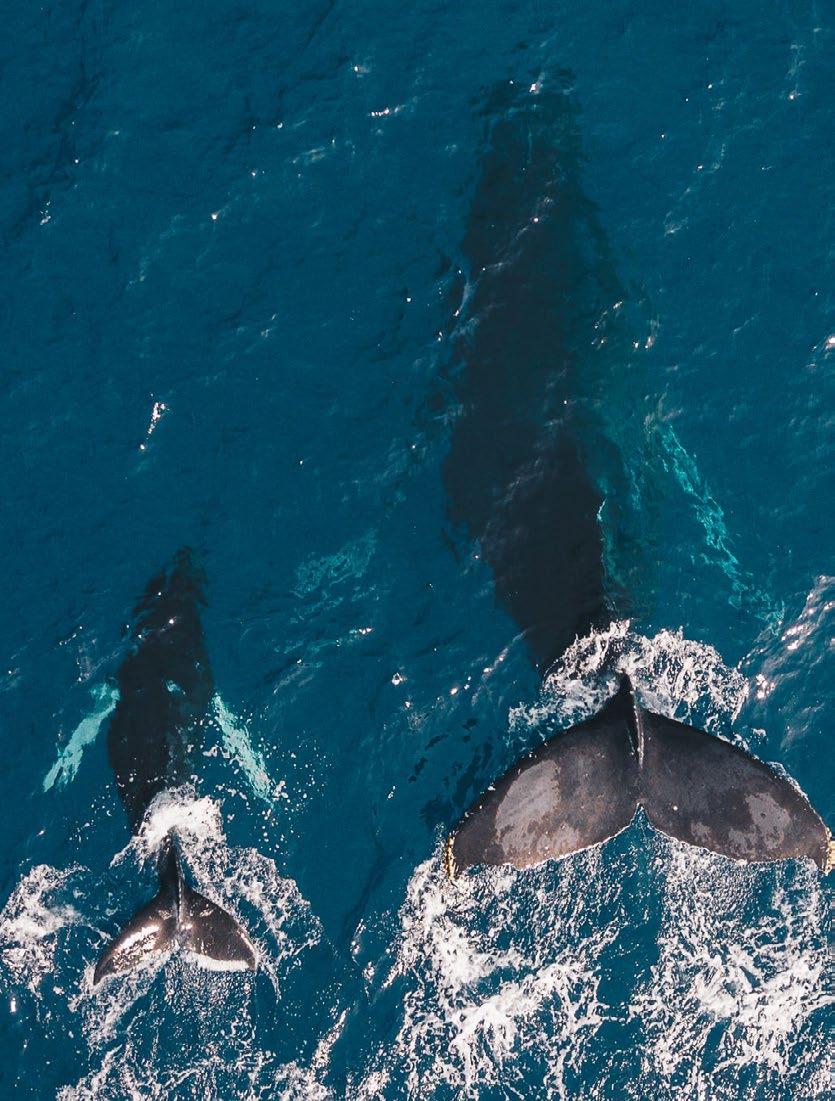
Step 8. Provide students with the decomposer card from Appendix C.
Step 9. Provide students with tape, so that they can tape down their organism cards and the sun to their poster paper. Display the food webs around the classroom (optional). NOTE: If the food webs are displayed, an additional set of cards will need to be printed for the Part E: Disruptions to the Food Web activity.
Q “What type of organisms receive energy from the sun?”
A Producers receive energy from the sun to create food.
Q “What is a decomposer?”
A Decomposers are organisms that break down dead or decaying plants and animal parts, as well as waste.
Q “If you were to add the decomposers to your food web, from which organisms would they receive matter and energy?”
A All organisms in their food web will eventually die and pass on matter and energy to the decomposers.
Q “How would you show this in your food web?”
A There would be an arrow drawn from each organism in their food web to the decomposer card.
Step 1. If possible, have students stand in a circle about arm’s length apart. NOTE: This activity is best conducted outside or in a gymnasium where there may be more space.
Step 2. Hand out one organism card to each student. Instruct students to hang their card around their neck (see Part A: Preparation for more information), so that their hands are free.
Step 3. Explain to students that they will be representing the organism listed on their card. Ask students to look around the circle and think about what might consume me and what might I consume.
Step 4. Hand the ball of yarn to a student representing a producer. Explain to students that in one hand they will hold the yarn and in the other they will throw the ball of yarn. Tell students that the yarn represents the matter and energy that is being passed from organism to organism. The student will pass the ball of yarn to an organism that requires its matter and energy. In other words, to the organism that eats it.
Step 5. Try a practice round with students so that they understand the rules.
Step 6. When the students get to the end of a food chain, ask:

Q “Where should the coral reef food web begin?”
A Producers are the base of the food web.
Q “Does anyone know what this represents?”
A It is a food chain.
OPTIONAL: Ask students to identify the different trophic levels (primary producer, primary consumer, secondary consumer, etc.).
Step 7. Tell the students that they are going to start over again, but that everyone who is holding a piece of yarn should remain holding it. Reinforce that the coral reef food web begins with producers by asking:
Q “Where should the coral reef food web begin?”
A Producers are the base of the food web.
Step 8. Give the ball of yarn to a producer. Tell students to throw the ball of yarn to different organisms this time. Allow students to create another food chain. After each food chain is created, have the students throw the ball of yarn back to a producer, but make sure that each student with a piece(s) of yarn holds onto it. Continue making food chains until each student is holding a piece of yarn. NOTE: Some students will be a part of multiple food chains. Once completed, ask students: Q “Does anyone know what this represents?”
a
web.
A The producers are holding the greatest number of strings because they are at the base of the coral reef food web. NOTE: Energy from the last organism in the food chain does not provide energy to producers.
A In a food web, organisms can eat more than one organism and they can be prey to many others.
Step 10. Students should continue to hold the string(s) of the web. Ask:
Q “What organism is not present in our food web, but can impact all organisms in it?”
A Humans (Homo sapiens) are not included in the food web.
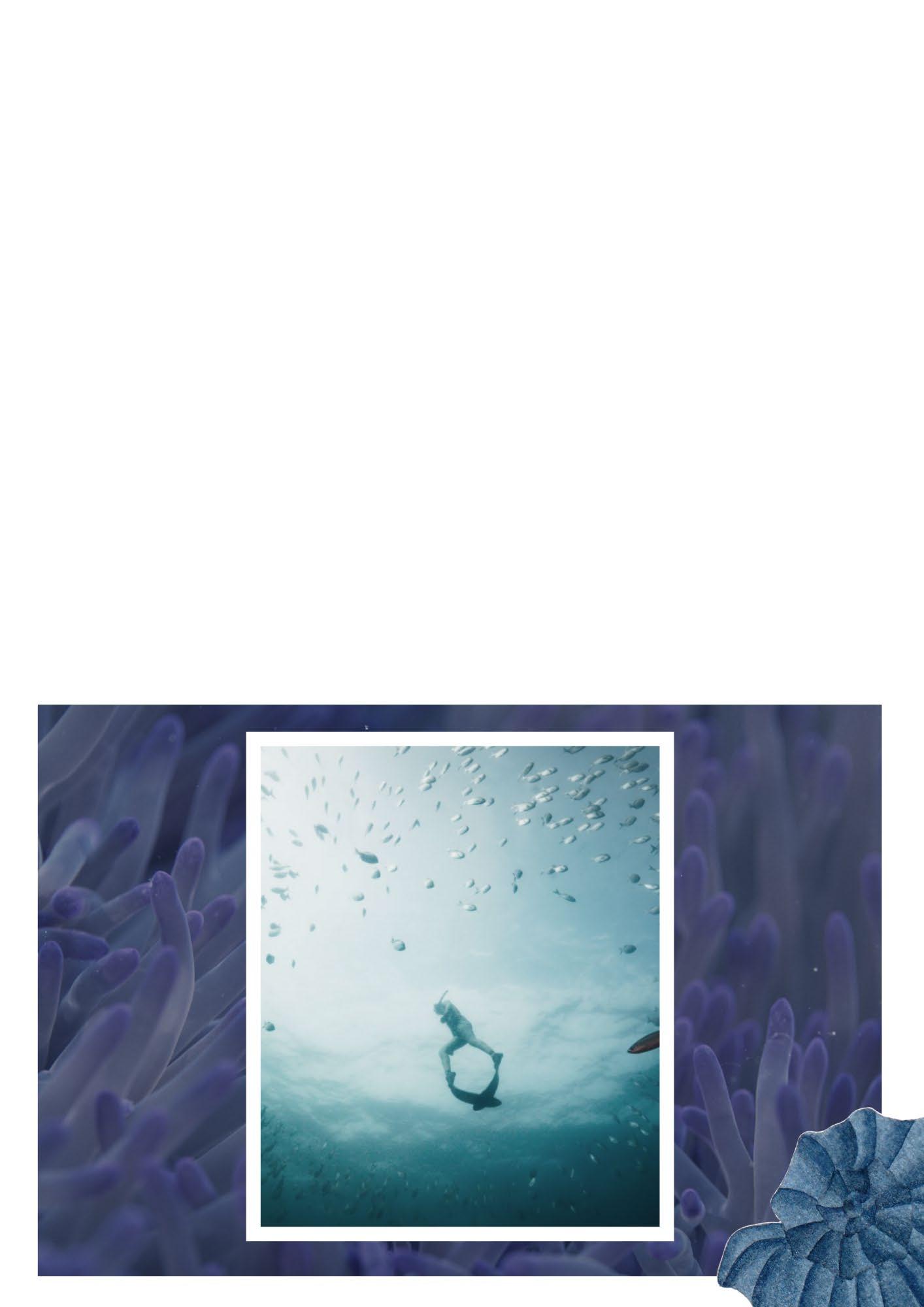
Q “Raise your hand if you are a decomposer.” A Crustaceans, mullet, and sea cucumber. Q “Who is holding the greatest number of strings? Why?”
Q “Why are there some students holding more than one string?”
A Threats to coral reefs include, but are not limited to, coral bleaching, ocean acidification, destructive fishing methods, coral mining, boat anchor damage, unsustainable tourism, and sunscreen. Three examples from the film include:
• Wedge-tailed shearwater birds are dying from malnutrition when consuming large amounts of plastic.
• Climate change is shifting the East Australian Current (EAC) further south, which brings warmer water to kelp forests. The warm water causes sea urchin populations to explode. These sea urchins “mow down” large amounts of kelp, which alters the entire ecosystem.
• Along Australia’s east coast, nurse sharks were fished to the brink of extinction. Ninety percent of the ocean’s large fish have been overfished. Overfishing is one of the greatest causes of damage to ocean ecosystems.
Step 11. Explain to students that their food web is stable; however, abiotic and biotic changes to this ecosystem can cause it to become unstable. Provide an example of the crown-of-thorns starfish (COTS). This creature is naturally present on Indo-Pacific coral reefs; however, their population sometimes explode when the right conditions are present. There are two reasons that scientists believe COTS populations become too large.
1) When nutrients from pollution are added to the ocean, these nutrients fuel an increase in phytoplankton and zooplankton populations. This is what the COTS larvae feed on. Under normal conditions, many of the COTS larvae will die from starvation, but with increased food supply, many more survive.
2) COTS’ predators, the titan triggerfish and Triton’s trumpet, are overfished. COTS populations go unchecked without these predators being present. The effects of the increase in the COTS population have devasting effects for corals too. COTS primarily feed on hard coral. When their populations explode, they can decimate a coral reef by eating most of the coral.
Step 12. Using the COTS example, show how the food web is affected when there is a disturbance to a coral reef. Explain to students that there has been a COTS outbreak (too many COTS) because titan triggerfish and Triton’s trumpet have been overfished.
Q “How can humans negatively disrupt a food web? Do you recall any examples from the film?”
Ask the student with the COTS card to lightly tug on the string. Then ask students to raise their hand if they are directly connected to that organism (e.g., eaten or eats).
A Coral is directly affected because COTS eat coral. The titan triggerfish and Triton’s trumpet would also have an abundance of food to eat; however, in this scenario, their populations have decreased due to overfishing. Without these predators, COTS populations go unchecked.
Students representing COTS, hard coral, titan triggerfish and Triton’s trumpet should continue to keep their hands raised.
organism(s)
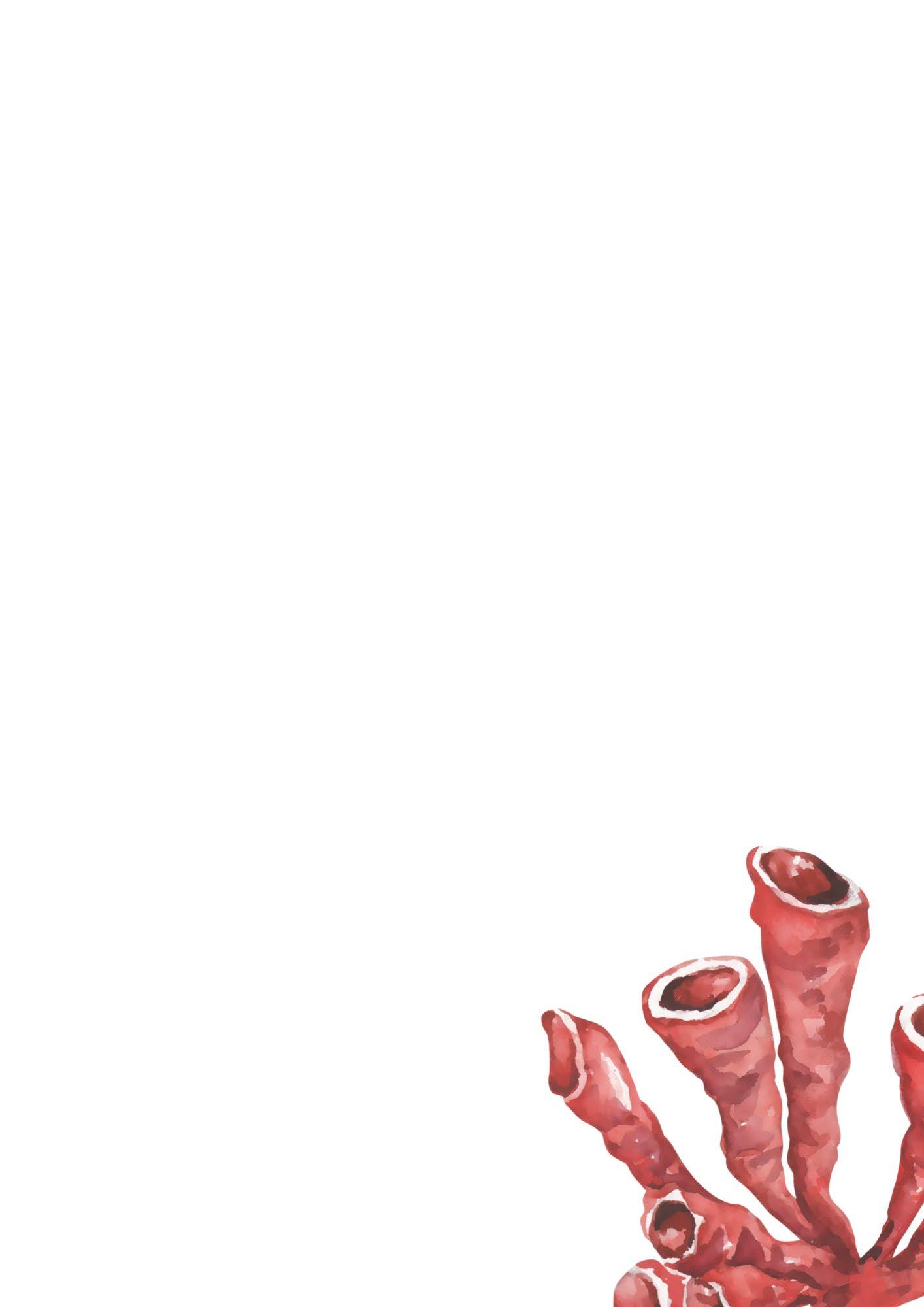
A The students representing “Drupella” snails, butterflyfish, parrotfish, and titan triggerfish should feel the tug because they all consume coral. Zooplankton should also feel the pull because they are consumed by coral. Students representing butterflyfish, COTS, “Drupella” snails, hard coral, parrotfish, titan triggerfish, Triton’s trumpet, and zooplankton should continue to keep their hands raised. Students should recognize that if there are few to no corals, these organisms (except zooplankton) will have lost some portion of their diet (coral).
Step 14. Next, instruct students representing Drupella snails, butterflyfish, parrotfish, titan triggerfish, and zooplankton lightly pull on their string(s). Ask:
A Too many COTS can reduce the number of coral on a reef.
Step 13. Now, have the student representing coral lightly pull on their string(s). Ask:
Q “What happens if the COTS population explodes? What organism(s) are directly affected?”
Q “What do you think happens to the coral population when a COTS outbreak occurs?”
Q “What
are directly affected by this?”
Q
“What organism(s) are directly affected by this?”
A Many other students will raise their hands. Continue with this line of questioning until all students’ hands are raised. Afterwards, they can put their hands down.
Q
“When one organism is removed from the food web, what organisms are affected?”

A All organisms in the food web are affected in some way when a disturbance occurs in a food web. Some of these changes are small, but others can create instability in the food web.
A There are limited resources (nutrients and food) in a food web. When one population becomes too large or is greatly reduced, they can deplete resources that other organisms rely on for survival.
Step 15. When finished, collect the organism cards and yarn.
Step 16. Instruct students to answer questions on Lesson 1: Stringing it Together student worksheet.
1. Draw four different food chains below. Make sure to draw matter and energy arrows in the correct direction. Write the feeding strategy(s) for each organism in each food chain above the organism (producer, herbivore, carnivore, omnivore, or decomposer).
Coral Reef Food Chain #1
Coral Reef Food Chain #2
Coral Reef Food Chain #3
Coral Reef Food Chain #4
2. Choose one of the food chains that you created previously. Include the sun and decomposer and heat, waste, and nutrient arrows in your drawing.
Make sure to include additional matter and energy arrows. You can draw your food chain horizontally.
3. Answer the following questions.
• What is the main source of energy in the coral reef ecosystem? Explain.
• Which organisms are producers?
• Which organisms are herbivores?
• Which organisms are carnivores?
• Which organisms are omnivores?
• What is the difference between a decomposer and a detritivore?
• Which organisms are detritivores?
• Why are decomposers important in an ecosystem?
• Are there any organisms that have more than one feeding strategy (producer, consumer, decomposer)? If so, list the name of the organism and the different feeding strategies that they use.
• In your own words, describe how matter cycles through an ecosystem.
In your own words, describe how energy flows through an ecosystem.
• Do food webs show detailed information about diets of each organism? What other types of information would you like to know about their diets that would be useful when trying to understand the feeding connections in an ecosystem? Explain.
• What natural or human disturbances can cause the coral reef food web to become unstable? List three types of disturbances.
• How do disturbances affect the food web? Provide one example of a disturbance that you learned about in the film or that you researched.
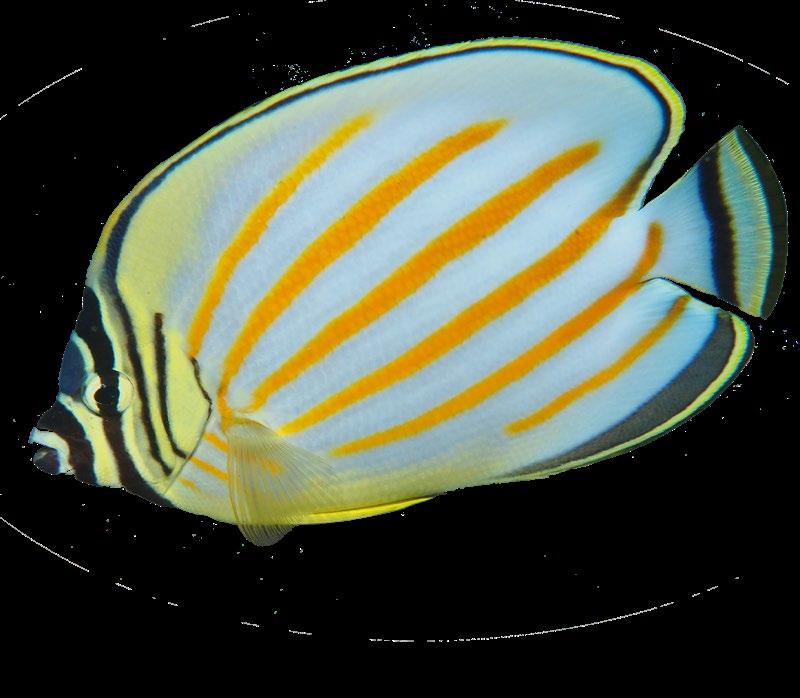

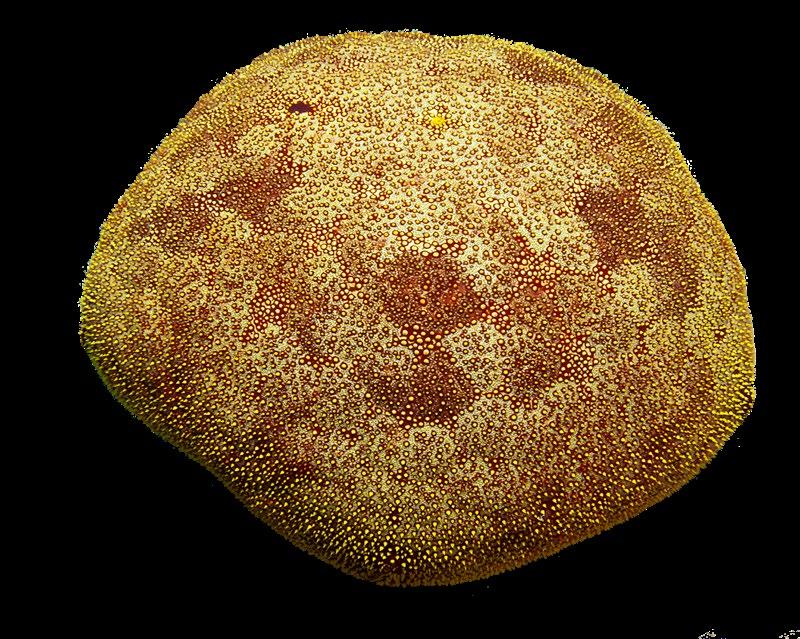
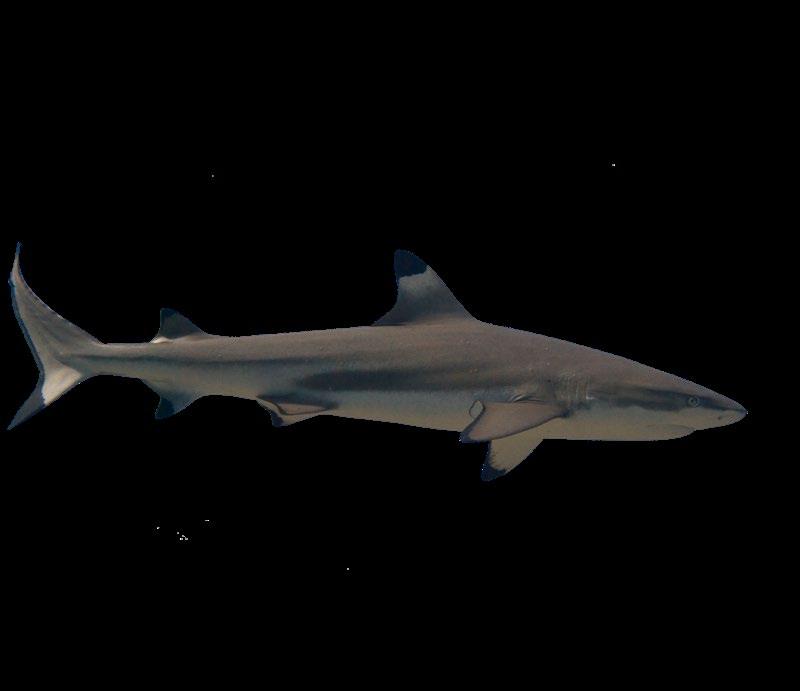
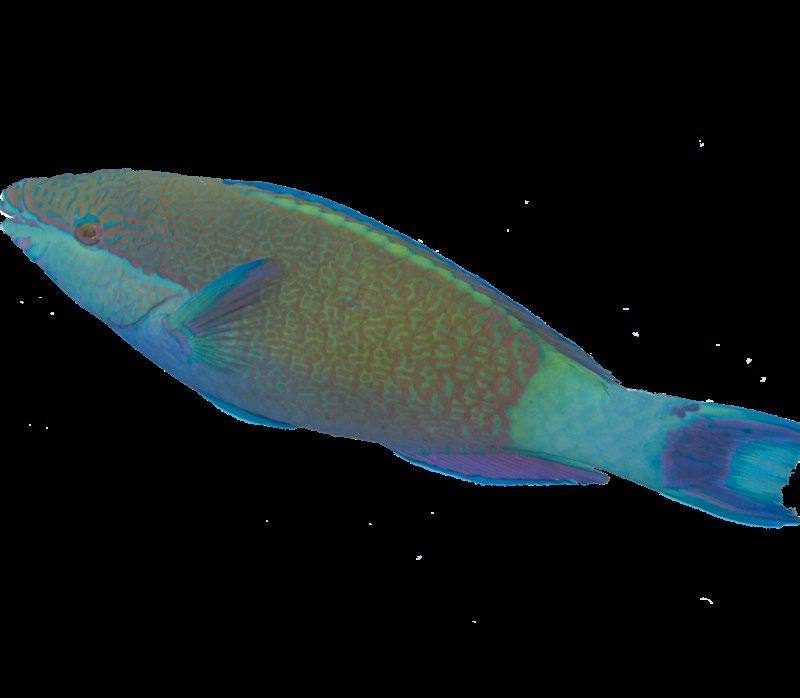
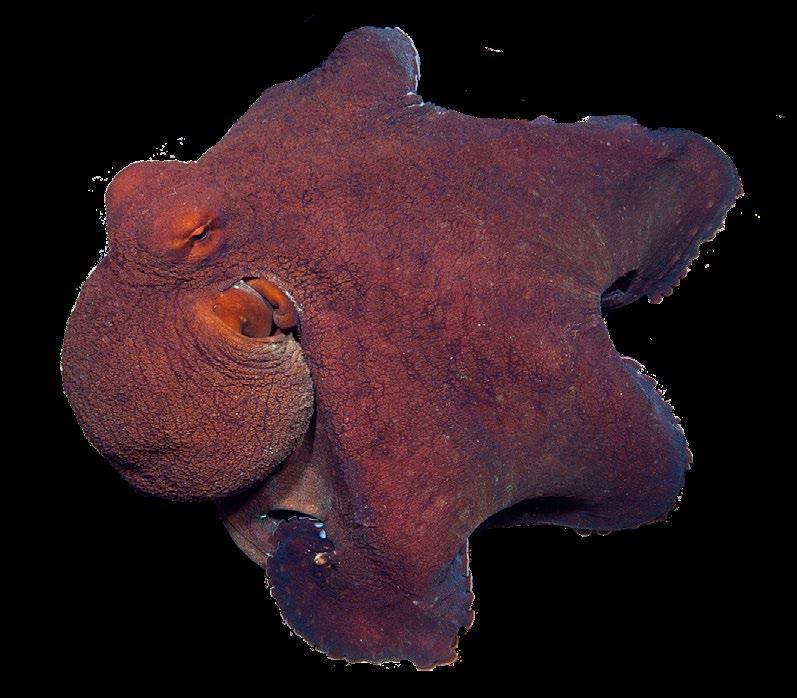
Common Name: Ornate Butterflyfish
Scientific Name: Chaetodon ornatissimus
Size: to 18 cm. (7 in.)
Diet:
• Anemone
• Hard Coral
• Zooplankton
Common Name: Cushion Star
Scientific Name: Culcita novaeguineae
Size: to 25 cm. (10 in.)
Diet:
• Hard Coral
• Macroalgae
Common Name: Day Octopus
Scientific Name: Octopus cyanea
Size: to 80 cm. (2.5 ft.)
Diet:
• Crustaceans
• Mullet
Common Name: Blacktip Reef Shark
Scientific Name: Carcharhinus melanopterus
Size: to 18 cm. (7 in.)
Diet:
• Butterflyfish
• Crustaceans
• Cuttlefish
• Mullet
• Octopus
• Parrotfish
Common Name: Bridled Parrotfish
Scientific Name: Scarus frenatus
Size: to 47 cm. (18.75 in.)
Diet:
• Hard Coral
• Macroalgae
Common Name: Pineapple Sea Cucumber
Scientific Name: Bohadschia graeffei
Size: to 30 cm. (12 in.)
Diet:
• Detritus
• Macroalgae
• Zooplankton

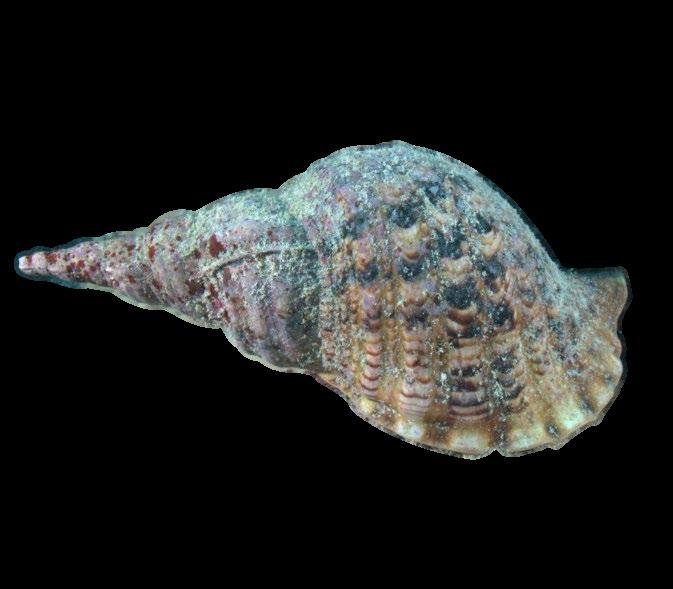
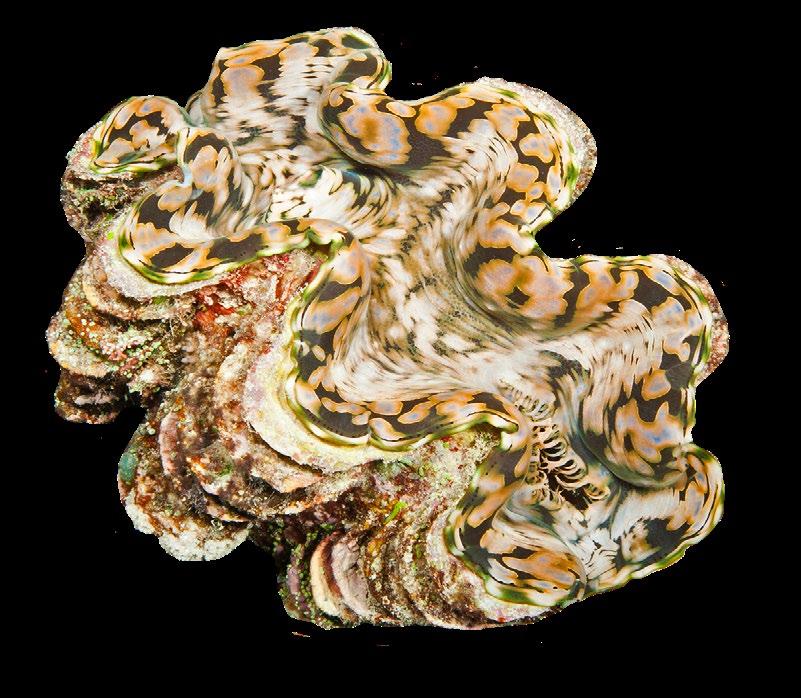

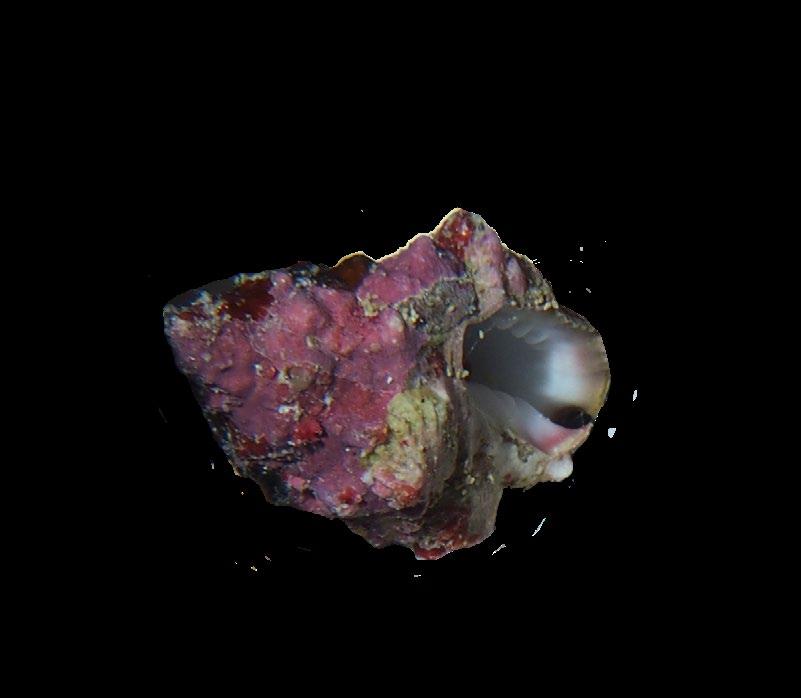
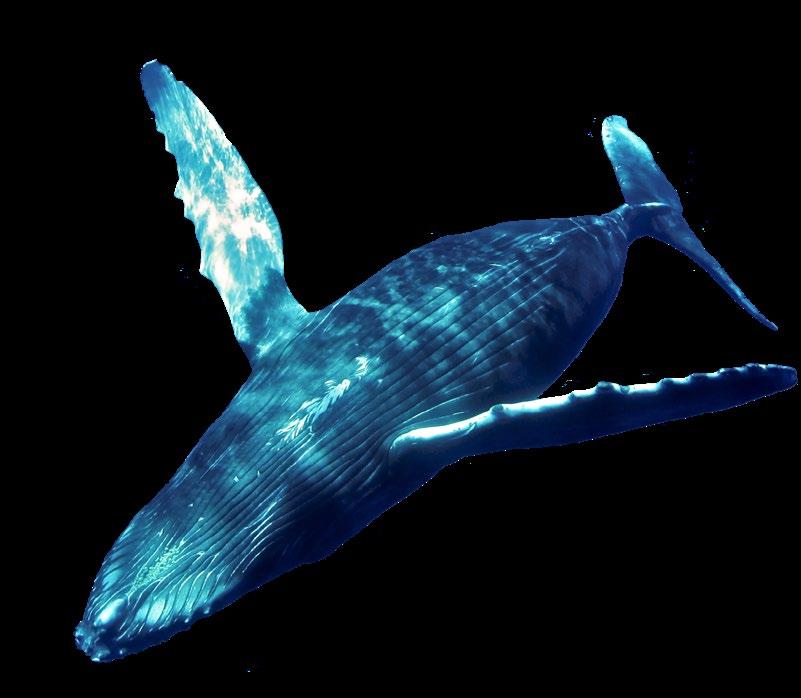
Common Name: Crown-of-Thorns Starfish (COTS)
Scientific Name: Acanthaster planci
Size: to 40 cm. (16 in.)
Diet:
• Hard Coral
Common Name: Triton’s Trumpet
Scientific Name: Charonia tritonis
Size: to 50.8 cm. (20 in.)
Diet:
• Crown-of-Thorns Starfish
• Cushion Star
• Sea Cucumber
• Sea Urchin
Common Name: Giant Clam
Scientific Name: Tridacna gigas
Size: to 1.5 m. (4.92 ft.)
Diet:
• Phytoplankton
• Zooplankton
Common Name: Titan Triggerfish
Scientific Name: Balistoides viridescens
Size: to 75 cm. (2.5 ft.)
Diet:
• Crustaceans
• Drupella Snails
• Hard Coral
• Crown-of-Thorns Starfish
• Sea Urchin
Common Name: “Drupella” Snails
Scientific Name: Chaetodon kleinii
Size: to 4 cm. (1.25 in.)
Diet:
• Hard Coral
Common Name: Humpback Whale
Scientific Name: Megaptera novaeangliae
Size: to 16 m. (52.5 ft.)
Diet:
• Phytoplankton
• Zooplankton
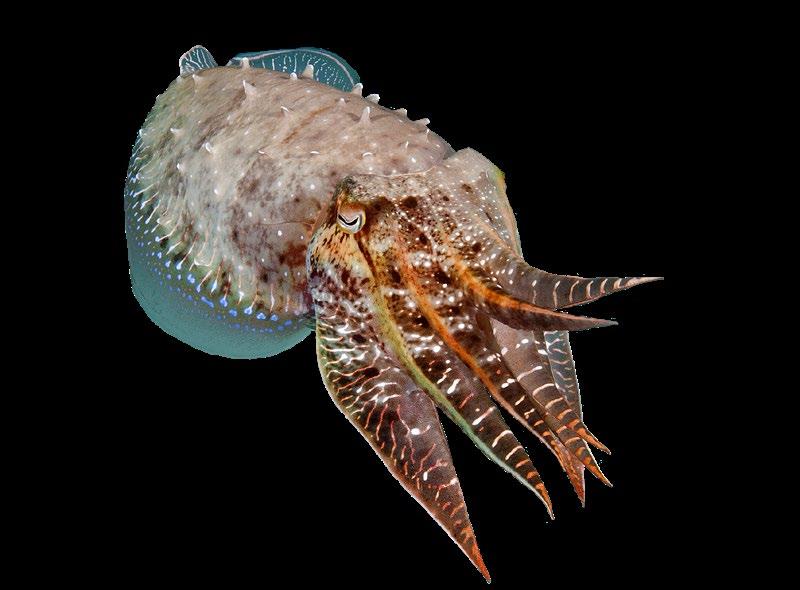

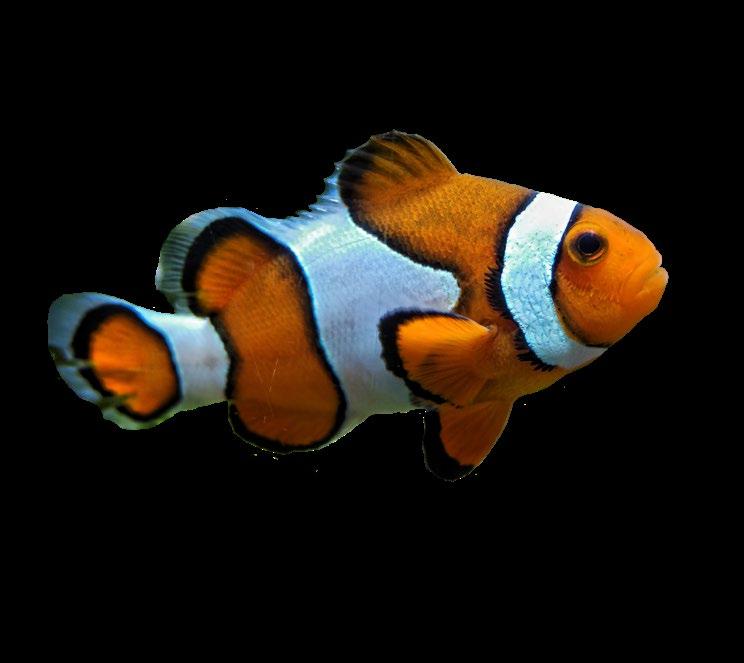


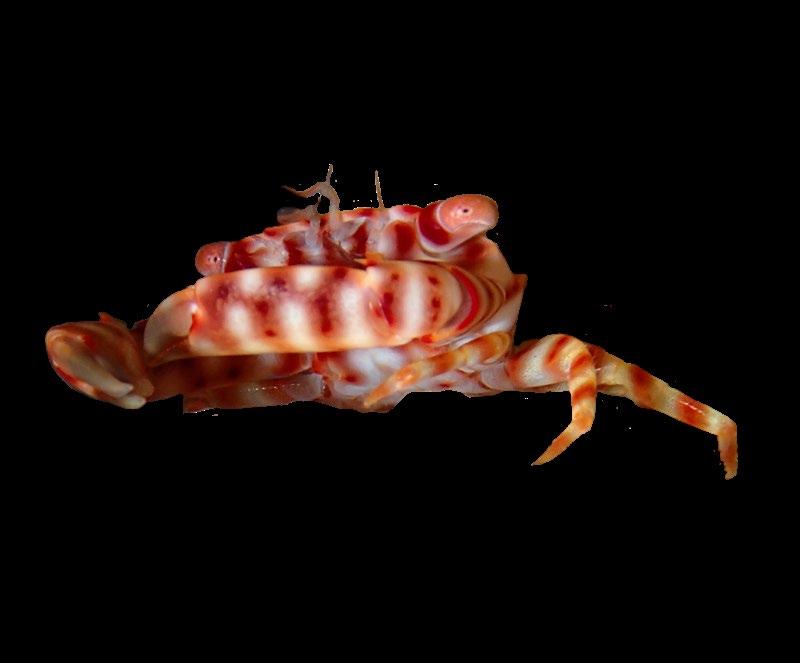
Common Name: Cuttlefish (unidentified)
Scientific Name: Sepia spp.
Size: to 25 cm. (10 in.)
Diet:
• Crustaceans
• Mullet
Common Name: Cauliflower Coral
Scientific Name: Pocillopora spp.
Size: NA Diet: • Zooplankton
Common Name: Green Algae (unidentified)
Size: Dependent on species
Diet:
• Sunlight (photosynthesis)
Common Name: Orange Clownfish
Scientific Name: Amphiprion percula
Size: to 11 cm. (4.3 in.)
Diet:
• Phytoplankton
• Zooplankton
Common Name: Green Sea Turtle
Scientific Name: Chelonia mydas
Size: to 1.2 m. (4 ft.)
Diet:
• Macroalgae
Includes: Crabs (in photo), shrimp, lobsters
Size: to 75 cm. (2.5 ft.)
Diet:
• Detritus
• Macroalgae
• Zooplankton

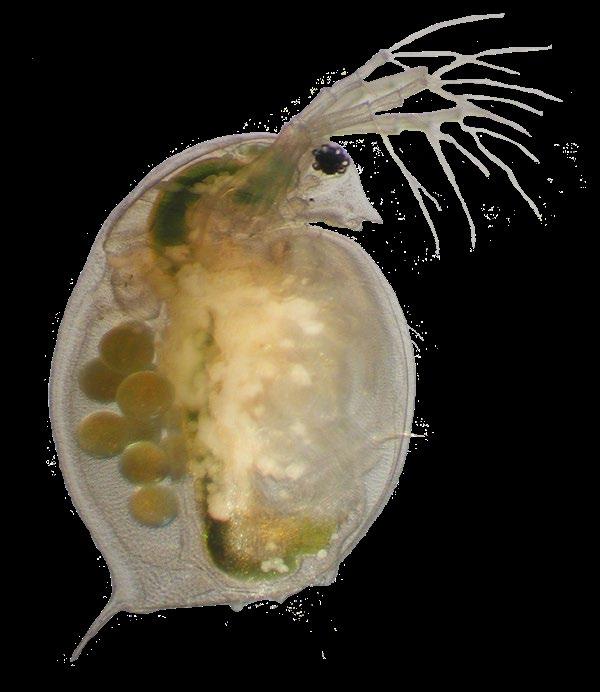
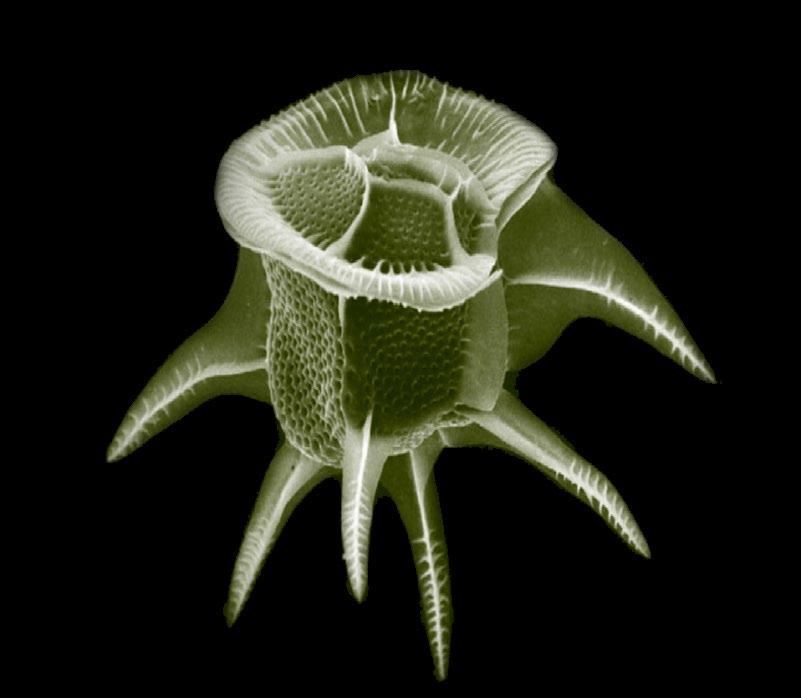
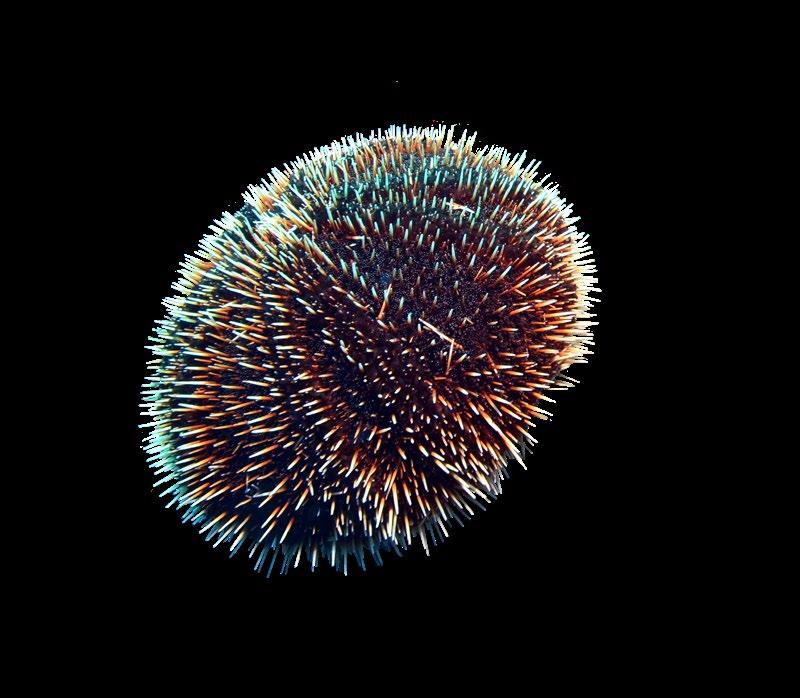

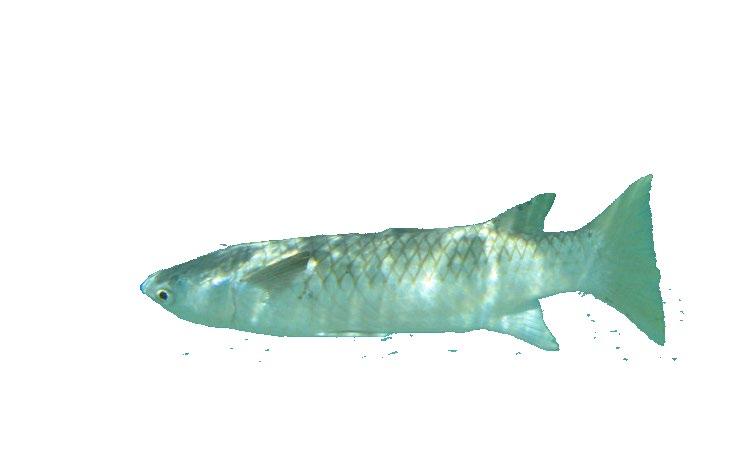
Common Name: Sea Urchin (unidentified)
Scientific Name: Echinoidea
Size: to 10 cm. (4 in.)
Diet:
• Macroalgae
Common Name: Magnificent Anemone
Scientific Name: Heteractis magnifica
Size: to 1m. (3.3 ft.) diameter
Diet:
• Crustaceans
• Sea Urchins
• Zooplankton
Common Name: Wedge-tailed (Shearwater)
Scientific Name: Ardenna pacifica
Size: to 46 cm. (18.1 in.)
Diet:
• Crustaceans
• Mullet
Common Name: Dinoflagellate
Scientific Name: Ceratocorys horrida
Size: 60 microns (in micrograph image)
Diet:
• Sunlight (photosynthesis)
Common Name: Zooplankton
Size: 1.5-5.0 mm (.059-.2 in.)
Diet:
• Phytoplankton
Common Name: Squaretail Mullet
Scientific Name: Ellochelon vaigiensis
Size: to 63 cm. (24.8 in.)
Diet:
• Detritus
• Macroalgae
• Phytoplankton

















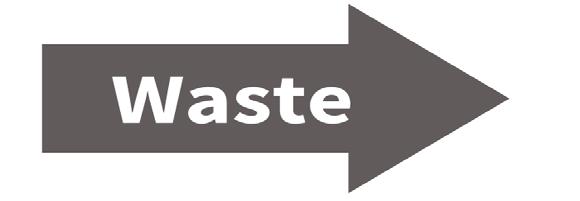
















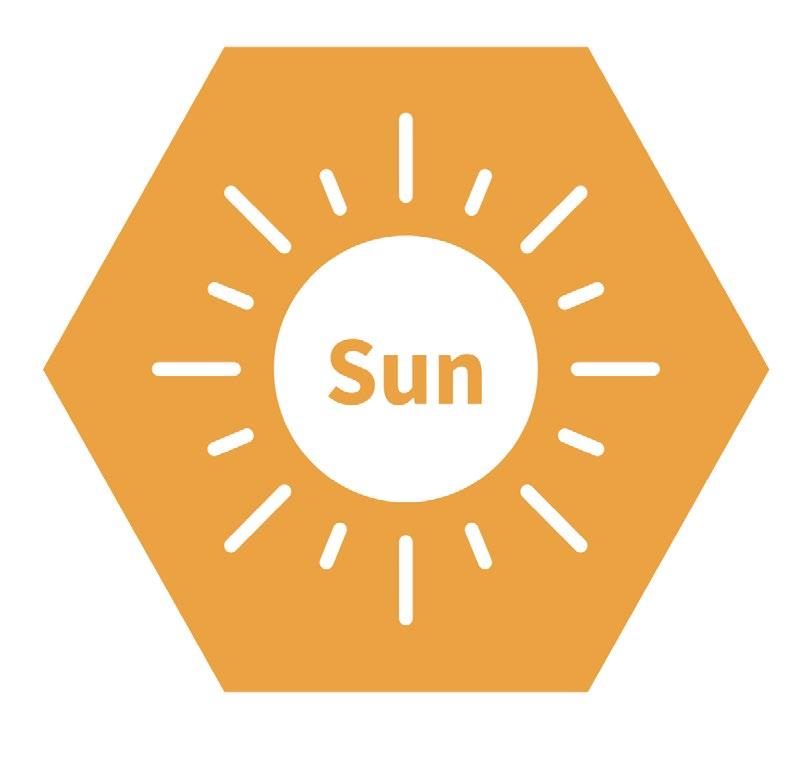
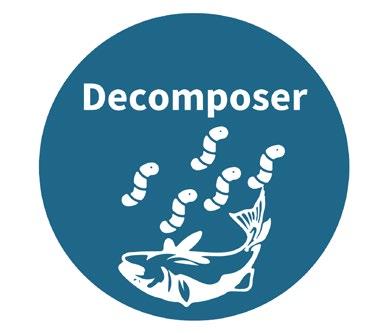



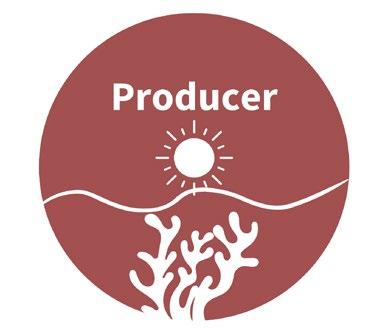











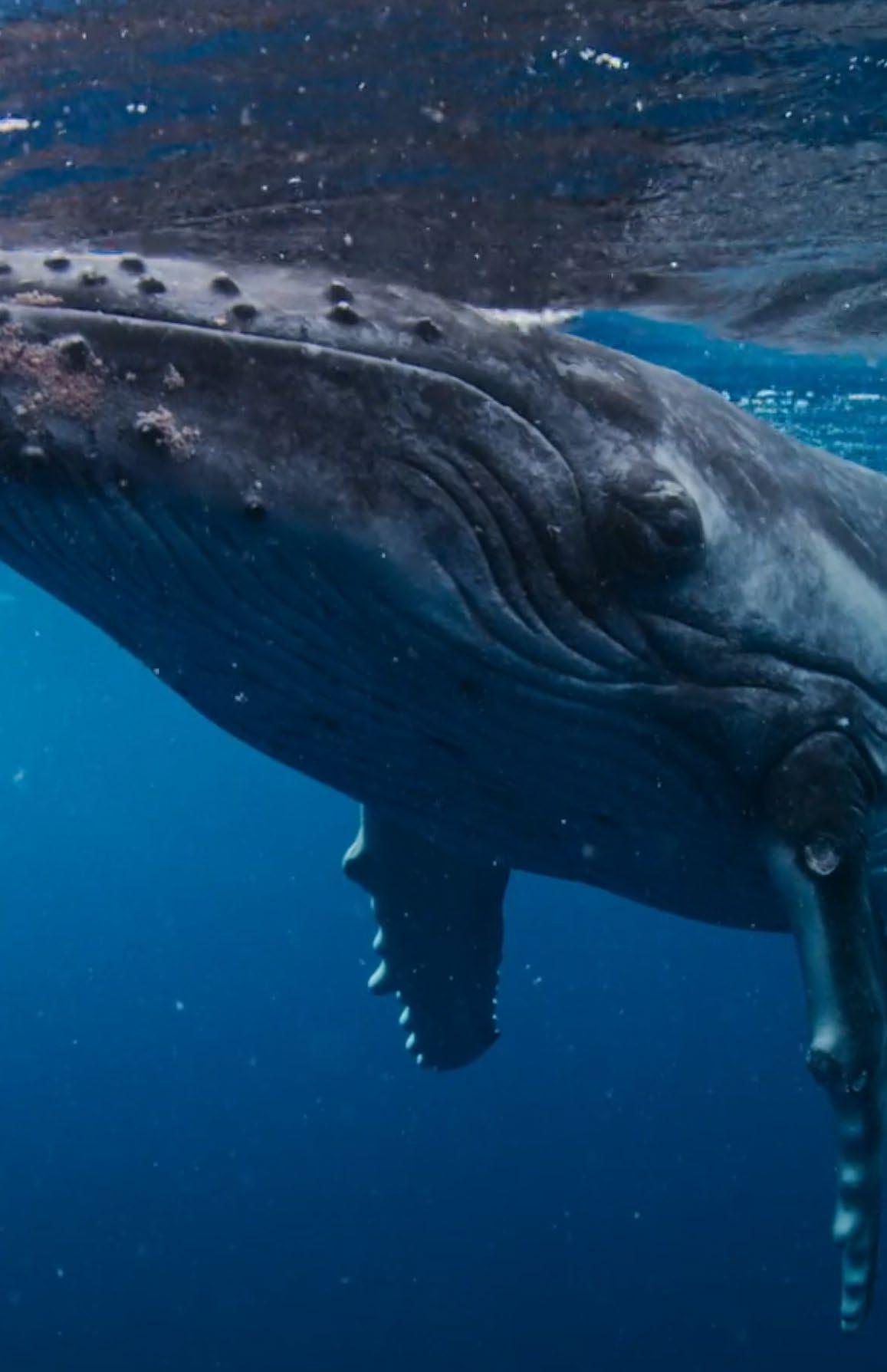

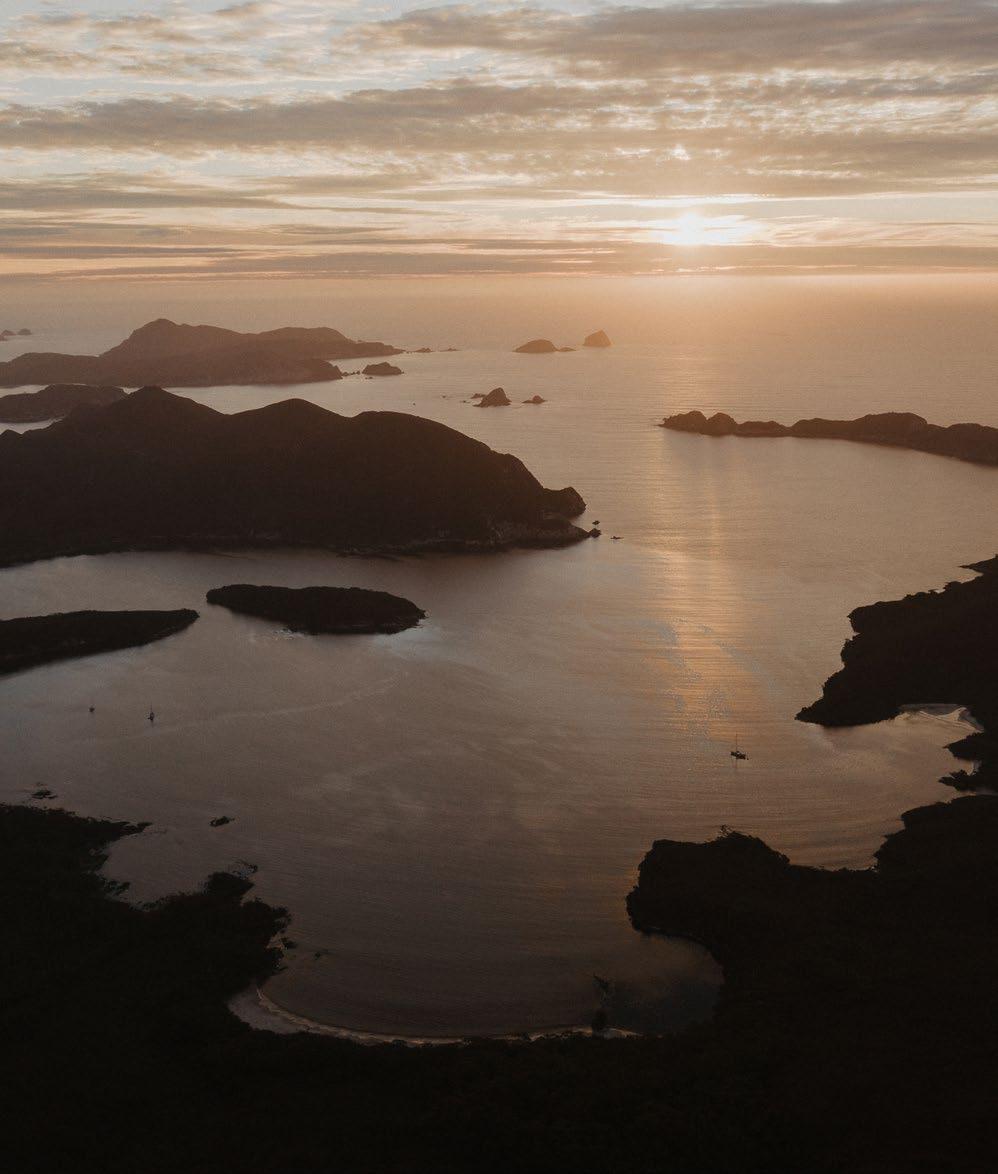
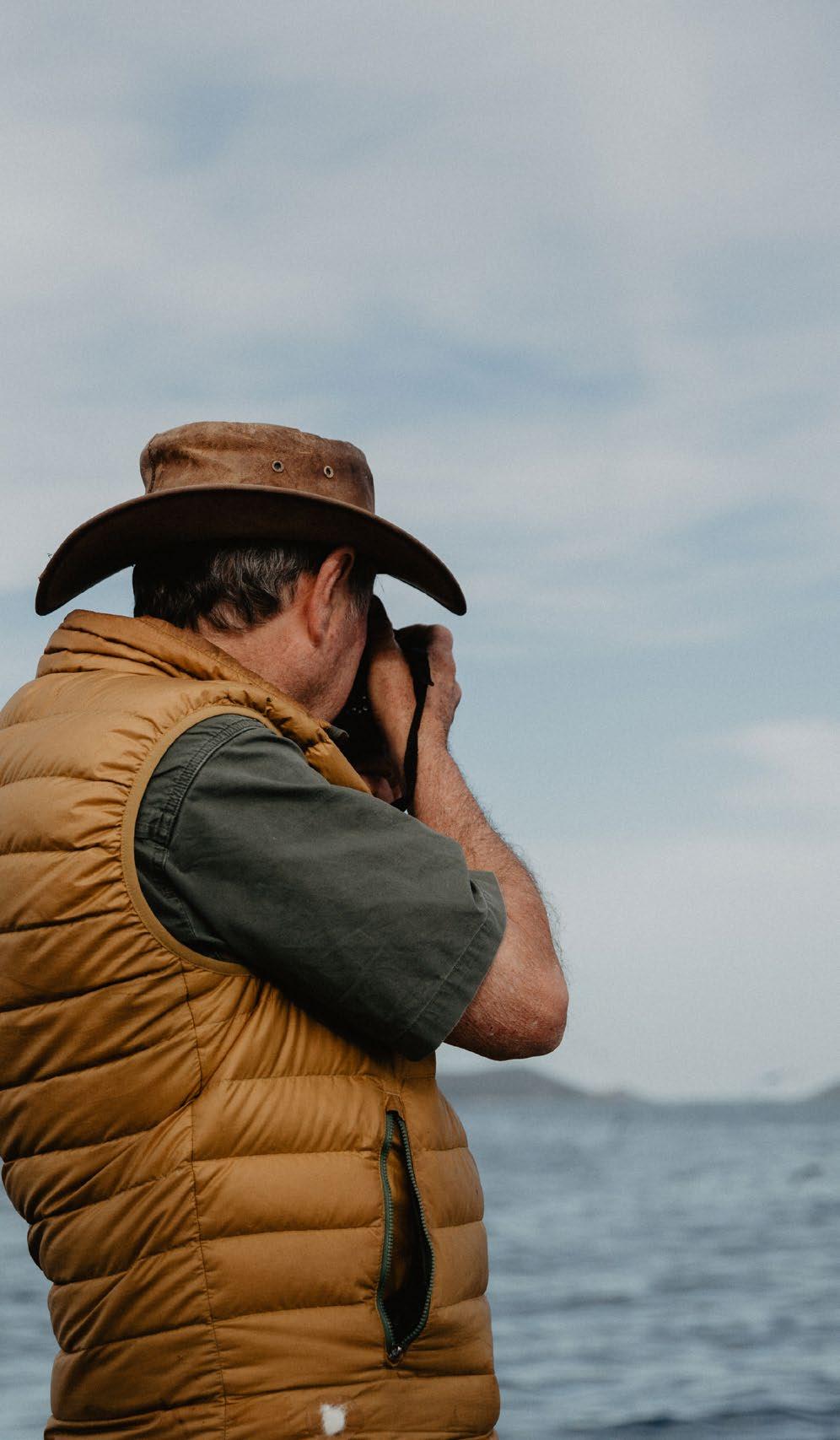
• Define and identify ecosystem services.
• Identify and describe the threats to an ecosystem.
• Research actions that can reduce threats to ecosystems.
• Discuss the purpose of a Marine Protected Area.

• Propose a Hope Spot.
• Evaluate resources for credibility.
• Cite sources as textual evidence.

• Lesson 2A: Explore a Hope Spot student worksheet.
• Marine Protected Areas with Sylvia Earle Vimeo video (https:// vimeo.com/639725084/ c330641980).

• Answer keys can be accessed by logging into www.lof.org/ CoralReefCurriculum.
• Internet
• Prior to, or after, completing this lesson, students can learn more about Dr. Sylvia Earle and other marine biologists and oceanographers. Log in as an educator to the foundation’s education unit called Meet a Scientist (https://www. livingoceansfoundation.org/education/ portal/course/meet-a-scientist/) for Background Information and an accompanying lesson plan.
• To extend this lesson, conduct Lesson 2B: Nominate a Hope Spot. Student groups can nominate a Hope Spot that is not currently recognized. They will fill out an application proposing why their Hope Spot should be protected and present their proposed Hope Spot to the class. Students who are not presenting will fill out a grading card to determine if the nomination should be accepted as a Hope Spot. Login to www. lof.org/CoralReefCurriculum to find this lesson and others that are a part of the Conservation Unit.
Next Generation Science Standards:
• MS-LS2-5 Evaluate competing design solutions for maintaining biodiversity and ecosystem services.
Ocean Literacy Principles: 6.D.1-6.D.21, 6.E.1-6.E.15
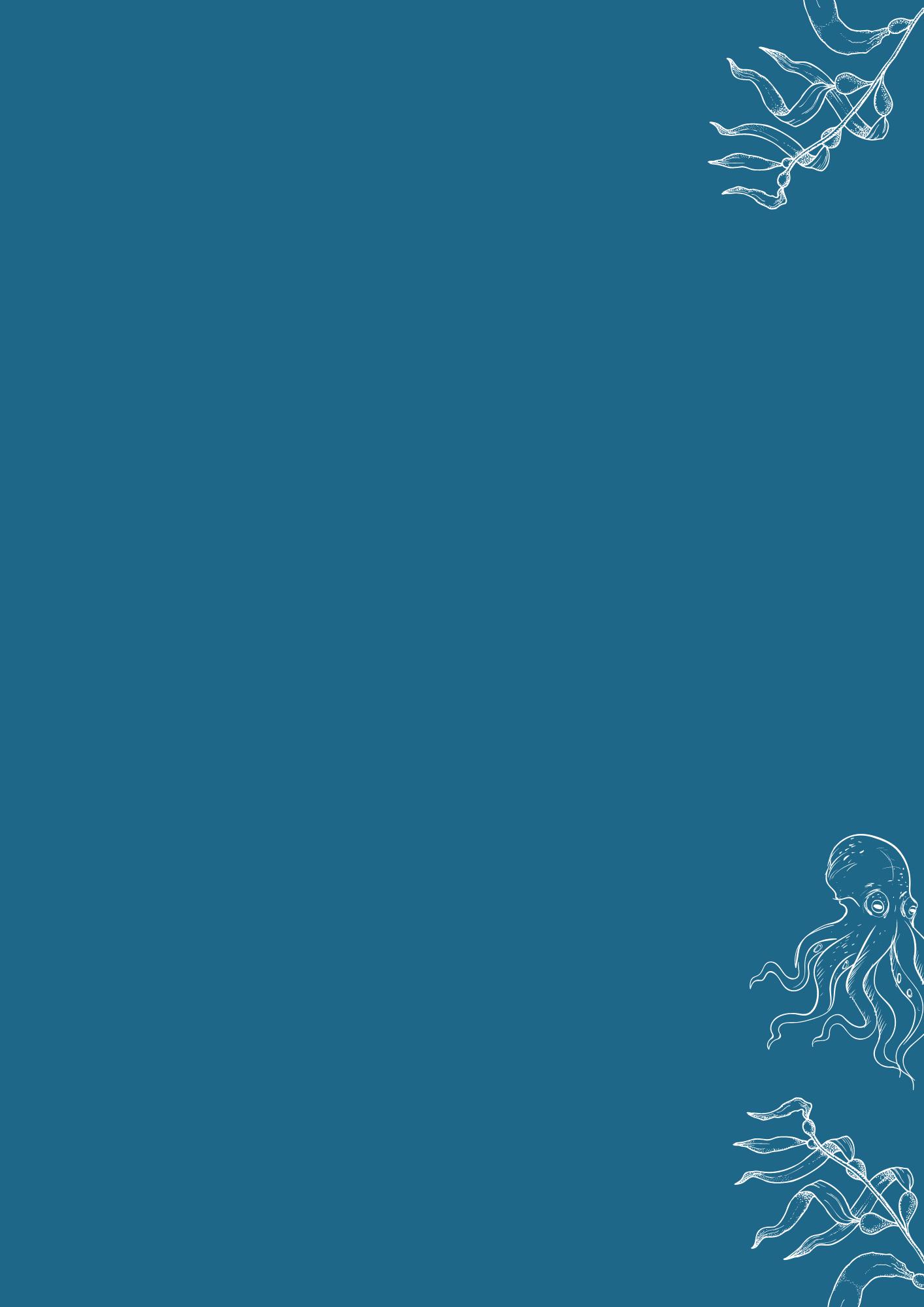
Common Core State Standards:
• RST.6-8.1
• RST.6-8.8
• RST.6-8.10
• SL.6.1-8.1
• WHST.6-8.8
• WHST.6-8.9
The Explore a Hope Spot activity is based on Mission Blue’s Hope Spot Nomination Form, which can be accessed at https://mission-blue.org.
Step 1. Watch Marine Protected Areas with Sylvia Earle Vimeo video (https://vimeo. com/639725084/c330641980).
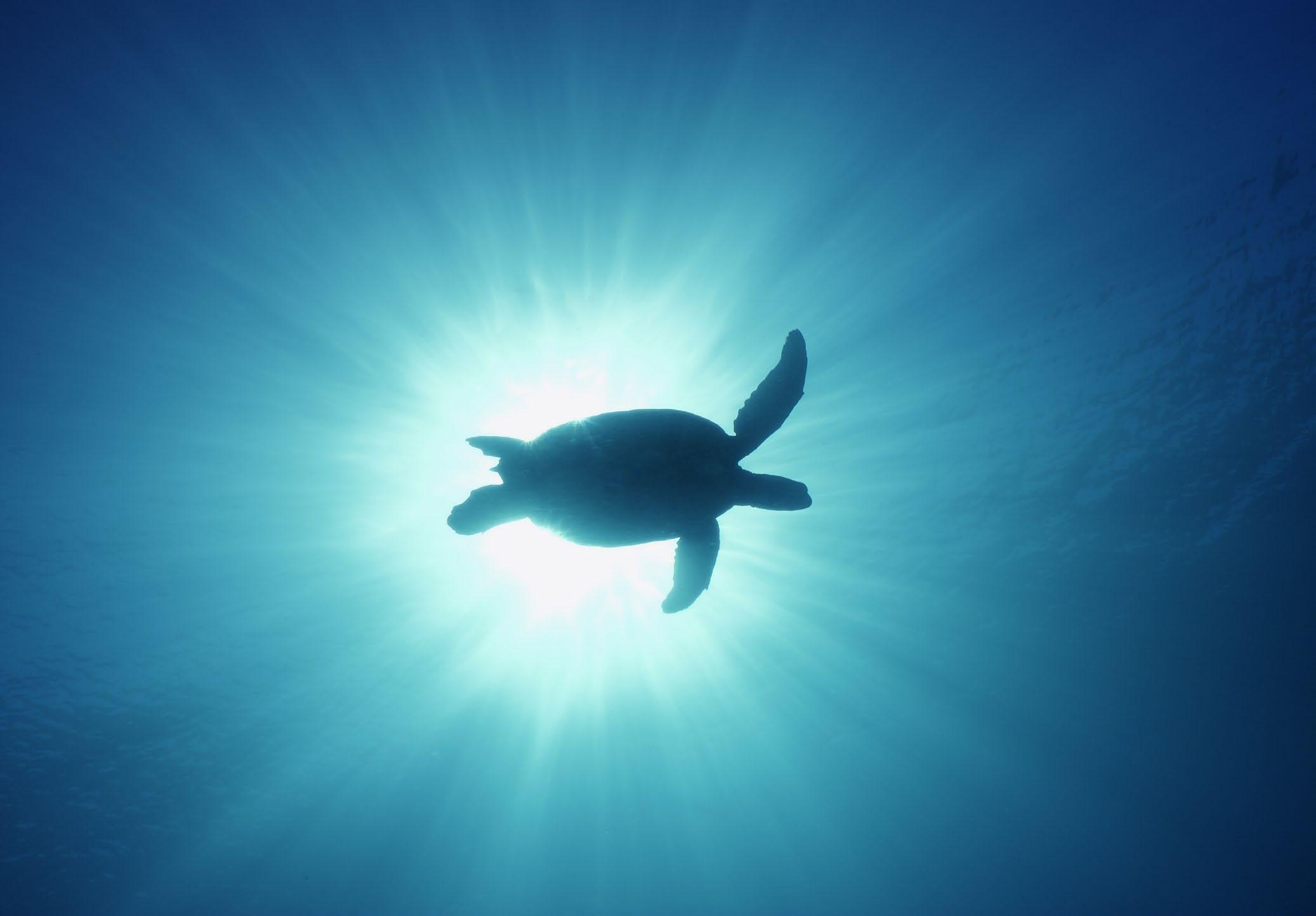
Step 2. Before beginning this lesson, students should understand that high biodiversity often means that an ecosystem is healthy. They should also recognize that disruptions to the biological or physical components of an ecosystem can lead to shifts in all its populations. If necessary, reinforce these concepts before beginning this activity.
Step 3. Prior to starting the activity, explore the concept of ecosystem services. Coral reefs will be used as an example here, as students have learned about this ecosystem in prior activities.
Step 4. Throughout the activity, there are suggested prompts in blue boxes to engage students in learning. After each question (Q) are suggested answers (A). Begin the activity by asking:
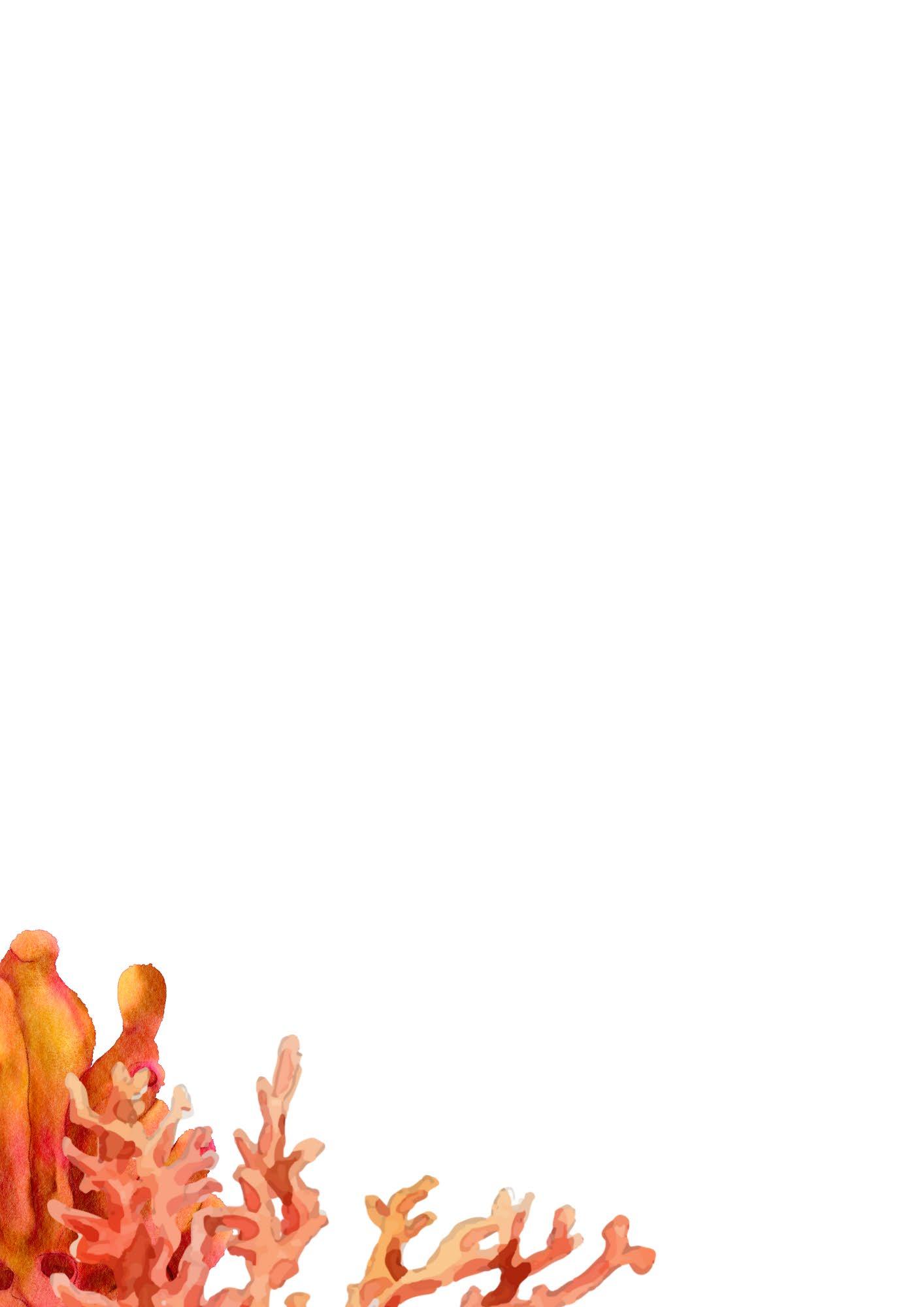
Q “Why is it important for us to keep ecosystems healthy?”
Q “What do you think happens to ecosystem services when biodiversity is threatened?” A
Step 1. Begin this activity with a discussion using the same ecosystem example that was used in the Background Knowledge section. To break up the Background Knowledge and Explore a Hope Spot sections, students could research the answers to question 1a below before attending the next class.
Discuss actions that we can take to maintain biodiversity. Any responses including the reduction of threats mentioned in Background Knowledge section (2c) are acceptable responses. There are additional suggested answers on the following page in Table 1; however, this list is not allinclusive.
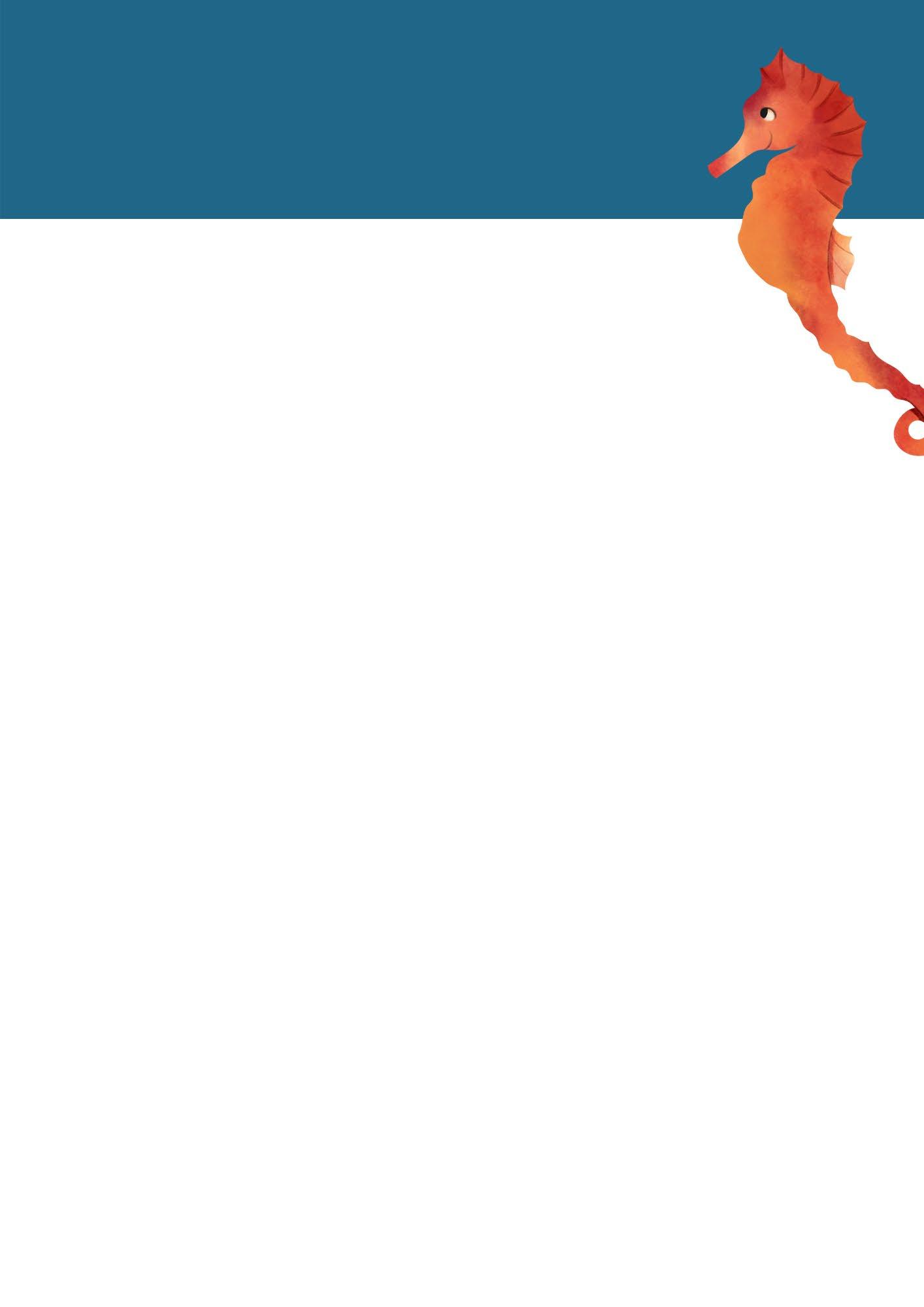
Overfishing
• Limit the number of fish species caught.
• Stop fishing for species until their population size has increased.
• Implement species size limits.
• Prohibit fishing at breeding sites.
• Restrict the number of people allowed to fish.
Coral bleaching (due to climate change)
This threat is due to climate change. Ways to reduce climate change include:
1. Reduce carbon footprint (individuals):
• Take public transport or ride a bike.
• Eat less meat.
• Reduce home energy consumption (e.g., turn off lights and appliances, replace lightbulbs with LED lights, choose renewable energy supplier).
2. Plant kelp, seagrass, and mangroves, which help to capture and store carbon dioxide.
3. Use renewable energy.
Ocean acidification (due to climate change)
• This threat is due to climate change. See coral bleaching answers.
Destructive fishing methods
Coral mining
Boat anchor damage
Unsustainable tourism
• Ban destructive fishing methods such as blast/dynamite fishing, cyanide fishing, and bottom trawling.
• Stop mining corals and use different building materials.
• Install mooring buoys so boaters to not have to anchor.
• Limit the number of people that can snorkel and scuba dive in a specific area.
• Limit the number of boats accessing a coral reef.
• Fine patrons who feed and harass wildlife.
• Create programs that require tourism operators to educate patrons before they enter the water.
Pollution
• Reduce agriculture, sewage, and industrial run-off. Use less fertilizers & pesticides on lawns, golf courses, and in agriculture.
• Recycle and eliminate single-use plastic. Use reusable bags and food containers.
• Donate working electronics and recycle broken ones.
• Properly dispose of trash.
• Shop sustainably.
• Use ecofriendly cleaning products and soaps.
Sunscreens
Hurricanes/ cyclones/ typhoons
Introduction of invasive species
• Encourage the use of reef-safe sunscreens. Prohibit the sale and use of sunscreens that contain oxybenzone and octinoxate.
• Climate change is fuelling these storms which are becoming larger and more powerful. See coral bleaching answers.
• Create removal programs.
• Hold derbies to help remove invasives.
• Sell invasive fish to restaurants (if edible).
• Create regulations for ballast and bilge water.
Solutions for all threats
• Educate others.
• Volunteer with an environmental organization.
• Vote on policies that protect the environment.
• Create Marine Protected Areas (MPAs).
Step 2. Ask students to read the Background Information on their Lesson
2A: Nominate a Hope Spot student worksheet. If Marine Protected Areas (MPAs) were not brought up as a method to reduce threats, make sure that students understand this concept.

Step 3. Break students into groups. NOTE: This lesson can also be assigned to individuals.
Step 4. The way in which this lesson plan is implemented depends on different factors such as the abilities of the class and time allotted for the assignment. There are two suggested methods for implementation.
1. Assign each group the same Hope Spot.
2. Allow students to choose any existing Hope Spot.
It is important to note that not all Hope Spots contain the same amount of information on the Mission Blue™ website (https://mission-blue.org/hope-spots/). Therefore, students will need to be able to research external resources to learn more about these Hope Spots. The Exmouth Gulf and Ningaloo Coast World Heritage Area is one Hope Spot that has a lot of information on the Mission Blue website and other external ones; therefore, it is used as an example in this lesson plan.
Step 5. Depending on the students’ needs, this lesson may need to be differentiated further. Students who do not require additional support can begin the lesson by searching for their Hope Spot on Mission Blue website (https://mission-blue.org/ hope-spots/).
For students that require additional support, provide students with resources to complete the activity. Here are some resources for the Exmouth Gulf and Ningaloo Coast World Heritage Area:
• Hope Spot Webpage: https://storymaps.arcgis.com/ stories/3bae53fcb4f544f8a6a033162370514f
• 2019 Exmouth Gulf Report: https:// bit.ly/3xE8qkF; the report can be downloaded for free by entering your email address on this page: https:// www.oceanwise.com.au/subscribe. Consider providing this report to all students regardless of differentiation, so that they do not have to enter their email address to access the report.
• Ningaloo Management Plan 20052015: https://www.dpaw.wa.gov. au/images/documents/parks/ management-plans/decarchive/ ningaloo_mp_01_2005_withmaps.pdf
• Protect Ningaloo – Save Exmouth Gulf: https://www.protectningaloo.org. au
• Ocean Wise: https://www.oceanwise. com.au/exmouth-gulf
• Reef Check Australia: https://www. reefcheckaustralia.org/ningaloo
• Ningaloo Turtles: http://www. ningalooturtles.org.au/index.html
• Australian Marine Conservation Society: https://www. marineconservation.org.au/ningaloomarine-park/
• Australia Institute of Marine Science: https://www.aims.gov.au/species-atrisk
• Sharks and Rays Australia: https:// www.sharksandraysaustralia.com/
• Australia Marine Parks: https:// parksaustralia.gov.au/marine/parks/ north-west/ningaloo/
• UNESCO World Heritage: https://whc. unesco.org/en/list/1369/
Step 6. Explain to students that they will use resources from the Mission Blue Hope Spots webpage and external resources to complete Explore a Hope Spot on their student worksheet. Students should list their sources on their student worksheet.
Step 7. After all groups have filled out their worksheets, review the information with the class and write their answers on the board to the following questions:
Q “What ecosystem(s) are a part of the Hope Spot?”
A
Coral reefs, oyster beds, sand-mud flats, mangroves, salt flats, seagrass, algae, underground subterranean karst limestone waterways, sponges, soft corals.
A Climate change, which leads to an increase in the frequency and strength of cyclones; destructive fishing due to bottom trawling; no recreational fishing regulations, which can lead to overfishing.
A Coastal protection (mangroves), carbon storage (seagrass and mangroves), food production (all ecosystems), ecotourism, and cultural heritage.
Q “What are the current protections for this Hope Spot (if any)?”
A • 1999 Environment Protection and Biodiversity Conservation Act 1999
• 2004 Western Australian Government designated Ningaloo as a marine sanctuary
• 2011 UNESCO designated Ningaloo coast as a World Heritage Centre
A No. Although there may be similarities, every ecosystem is different. For example, coral reefs that are in different ocean basins have different biotic and abiotic factors. Lionfish exist naturally in the Indo-Pacific, but they are invasive species in the Atlantic Ocean. Therefore, different actions are necessary to manage these two coral reef ecosystems. Using the term MPA does not mean that the actions taken to reduce threats and maintain a healthy ecosystem are the same. Each MPA must have a tailored plan because each one has different biotic and abiotic factors that influence it.

Q “What threats can cause the marine ecosystem(s) in the Hope Spot to become unstable?”
Q “What ecosystem services do we get from these marine ecosystems?”
Q “Are all marine ecosystems conserved in the same way?”
Around the world, approximately 12% of land is protected. However, only about 6% of the ocean is currently protected in any way. In the United States, national parks serve to protect special places on land. In the same way we can safeguard the ocean. Perhaps the most recognized around the world is called a marine protected area (MPA), sometimes called a marine managed area (MMA), which is a defined area of the ocean with set rules that state what is, and what is not, allowed in the area.
MPAs around the world vary greatly in size, level of protection, and how they are managed and enforced. Some MPAs focus on protecting an entire ecosystem, while others focus on the protection of individual species or preserving a cultural or historical site.
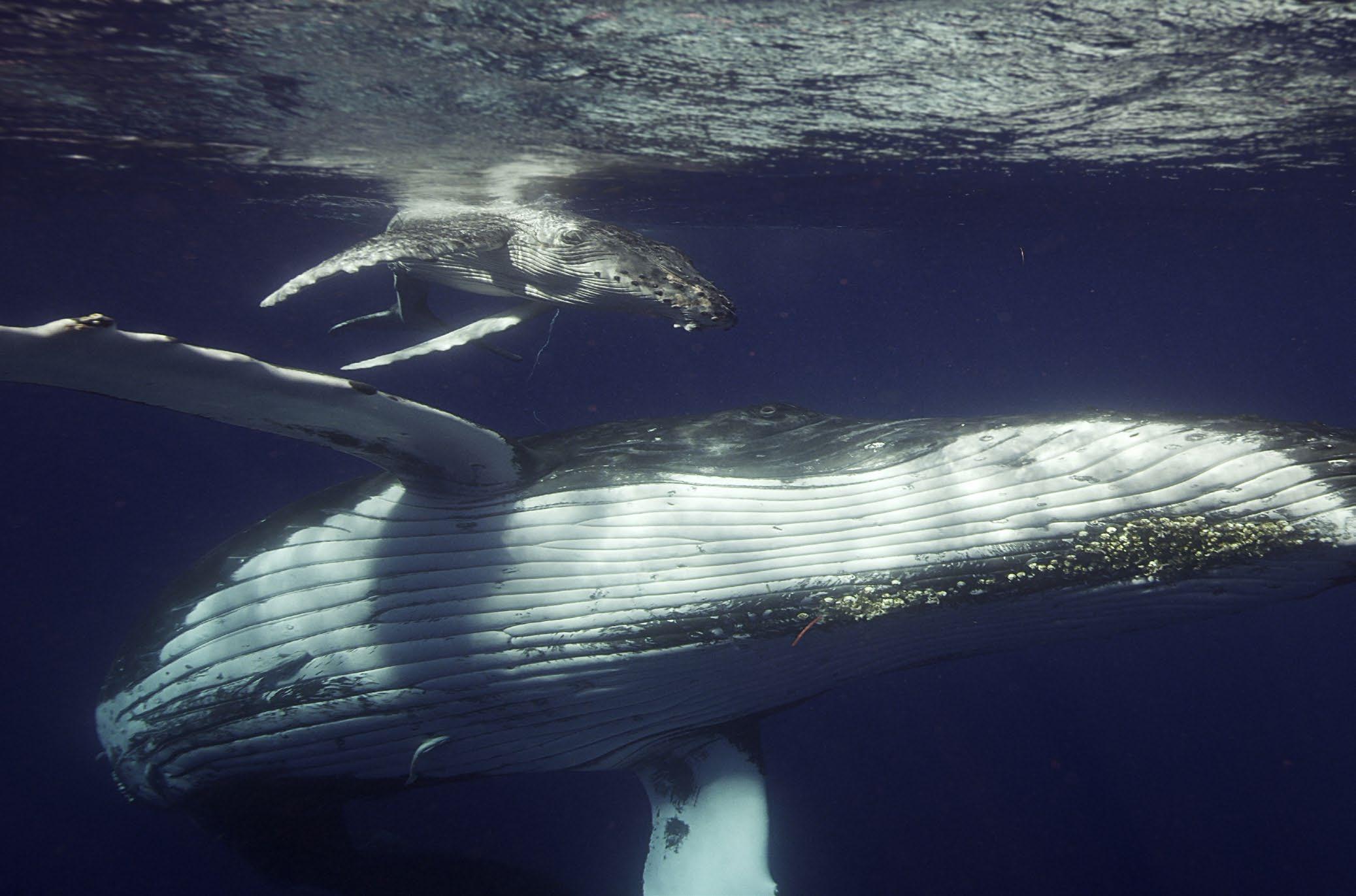
In an effort to create more protection for the ocean, Dr. Sylvia Earle launched Mission Blue and started a global conservation campaign called “Hope Spots,” which are special places that are scientifically identified as critical to the health of the ocean. Often these are areas in need of new protection, but they can also consist of existing MPAs that require additional action.

Like MPAs, Hope Spots come in all different sizes and are nominated for different reasons. Here are a few reasons they are nominated:
• A special abundance or diversity of species, unusual or representative species, habitats, or ecosystems
• Particular populations of rare, threatened, or endemic species
• A site with potential to reverse damage from negative human impacts
• The presence of natural processes such as major migration corridors or spawning grounds
• Significant historical, cultural, or spiritual values
• Particular economic importance to the community
Dr. Earle’s goal is to safeguard 30% of the ocean by 2030. You don’t have to be a scientist or a government official to nominate a Hope Spot. Anyone can nominate a site that gives them “hope” for the future of our oceans, a place that preserves biodiversity and is essential for ocean health.
Instructions: Research an established Hope Spot and answer the questions below. Information about Hope Spots can be found here: https://mission-blue. org/hope-spots/. If you use additional resources to research your Hope Spot, please make sure to list your resources under question #10.
1. What is the name of the Hope Spot?
2. Where is the Hope Spot located?
3. How large is this Hope Spot (estimated size)?
4. What ecosystem(s) are a part of the Hope Spot?
5. What are the current or potential threats to this Hope Spot? Explain.
6. List five ecosystem services that are provided by this Hope Spot.
7. What are the current protections for this Hope Spot (if any)?
8. What type of human activities take place in this Hope Spot?
9. Explain why this Hope Spot is special. For each question please list yes/no/unsure and explain the answers to each question.
Hold significant or representative populations of rare or endemic species
Hold a wide diversity of species
Hold a significant process or ecosystem (e.g., phytoplankton bloom, reefs, kelp forests)
Contain the site of significant event (breeding/ spawning)
On or part of a migration route
Contains organisms that are threated or endangered
Does the area Yes No Not sure Explain
A site that contains economic/ touristic appeal Potentially encouraging scientific research projects
Significant historical, cultural or spiritual values
10. What resources did you use while conducting this activity? Cite your resources here.
Ocean Odyssey is a K2 Studios release of a Wild Pacific Media and Definition Films production.
The film is directed by Nick Robinson.
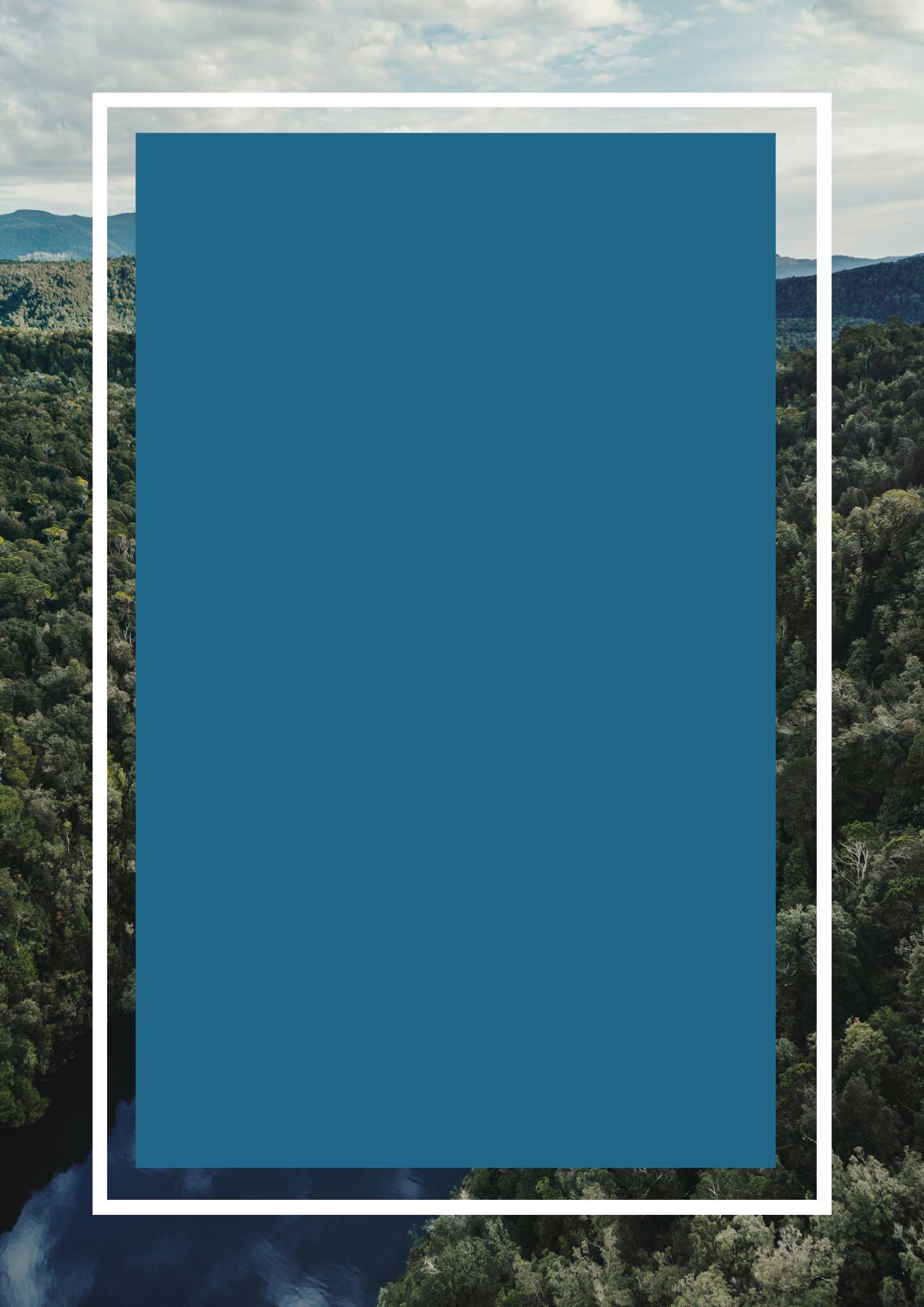
This unit is also part of the Khaled bin Sultan Living Oceans Foundation’s Coral Reef Ecology Curriculum. The entire curriculum can be found online at lof.org/CoralReefCurriculum.
©2022 Khaled bin Sultan Living Oceans Foundation. All rights
reserved. Except for film stills and related images, photos in the appendices are property of the Khaled bin Sultan Living Oceans Foundation. The Khaled bin Sultan Living Oceans Foundation and authors disclaim any liability for injury or damage related to the use of this curriculum. These materials may be reproduced for education purposes. When using any of the materials from this curriculum, please include the following attribution: Khaled bin Sultan Living Oceans Foundation Coral Reef Ecology Curriculum www.lof.org.
